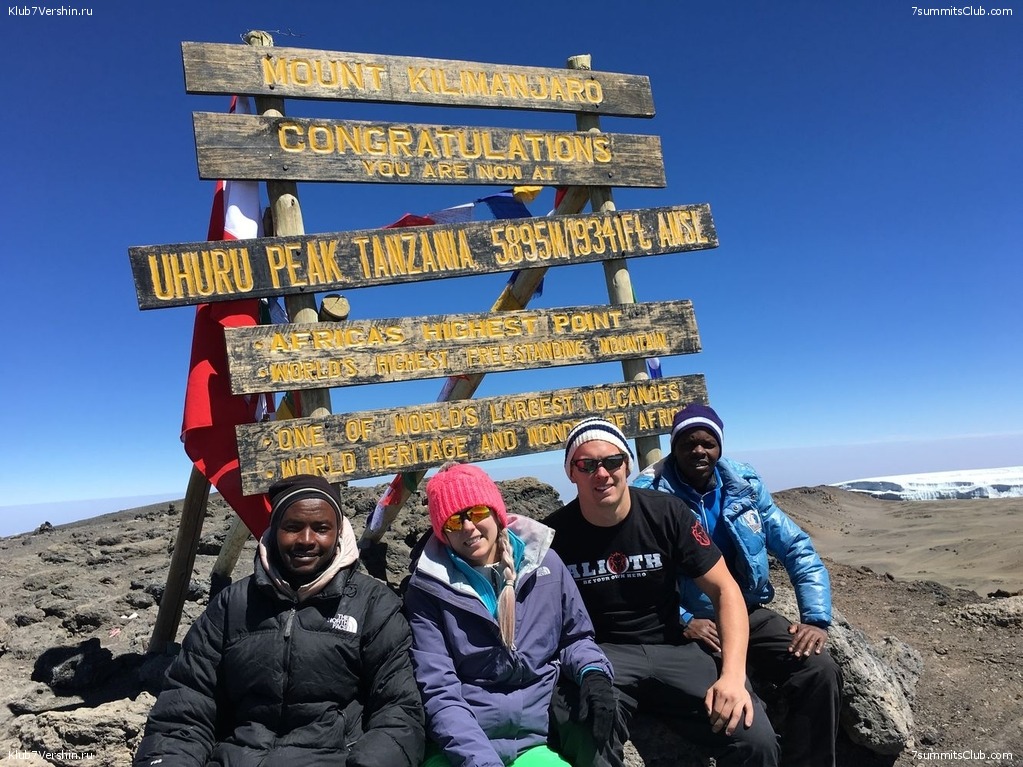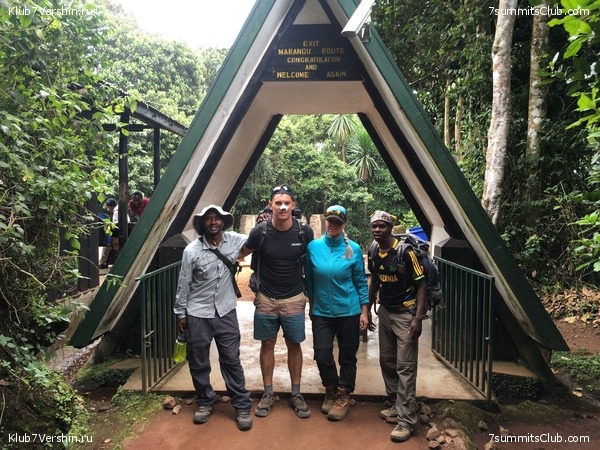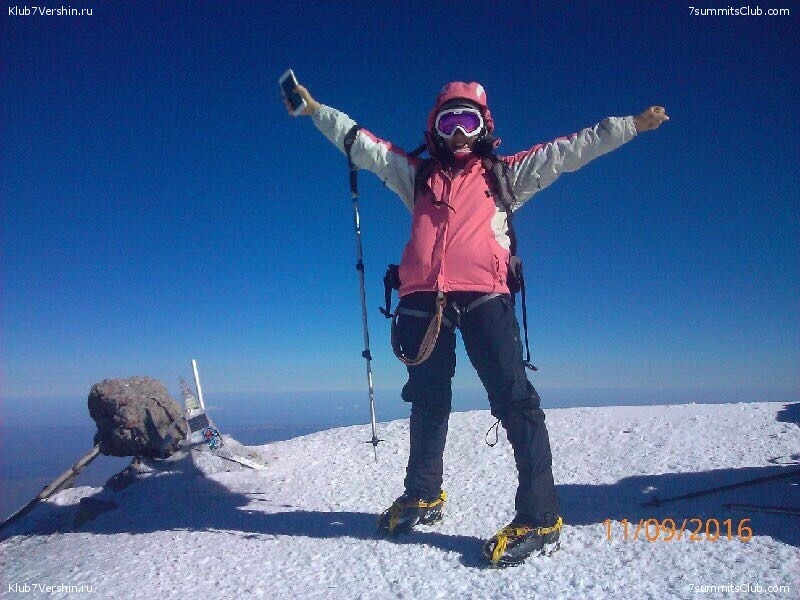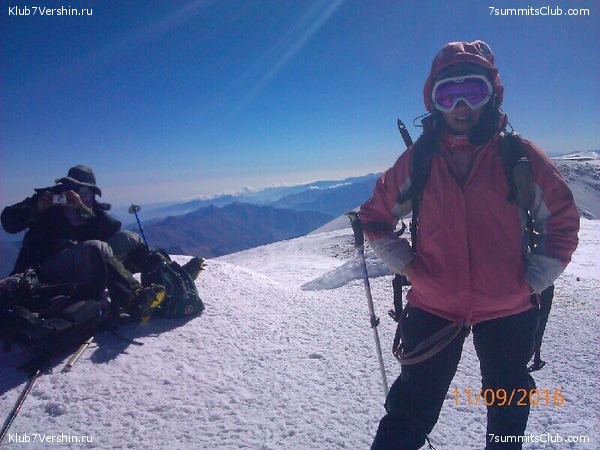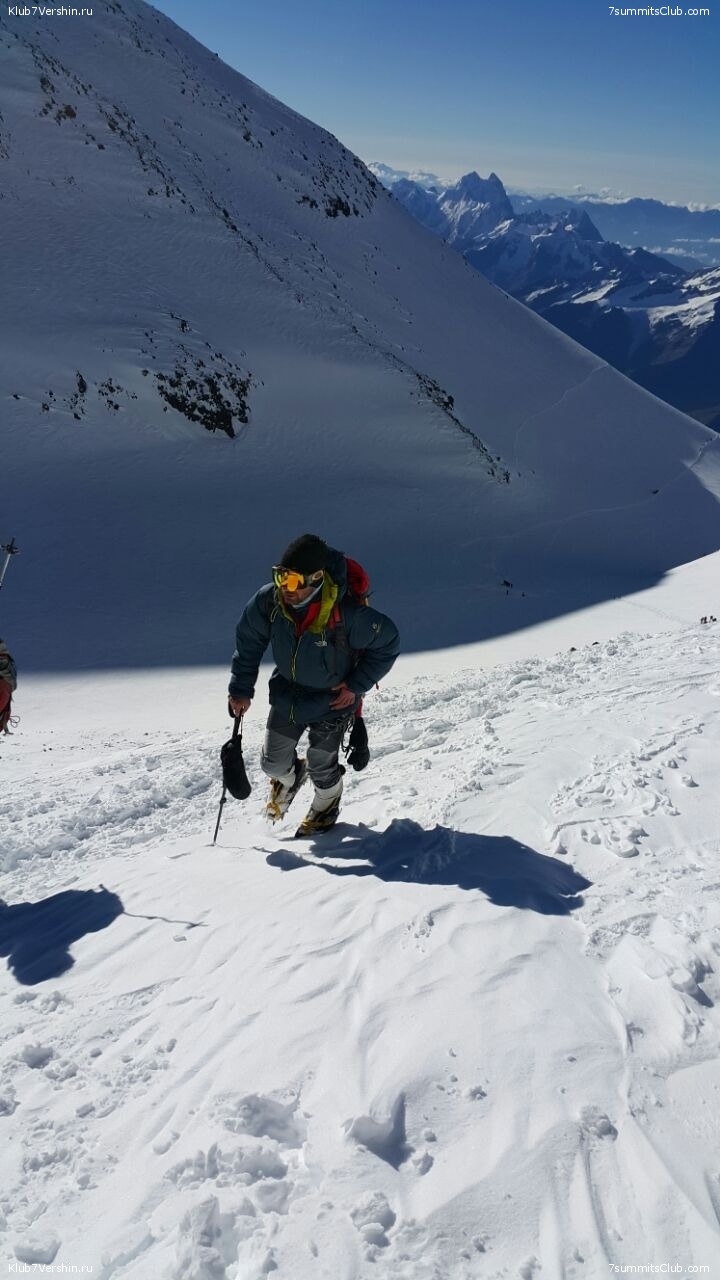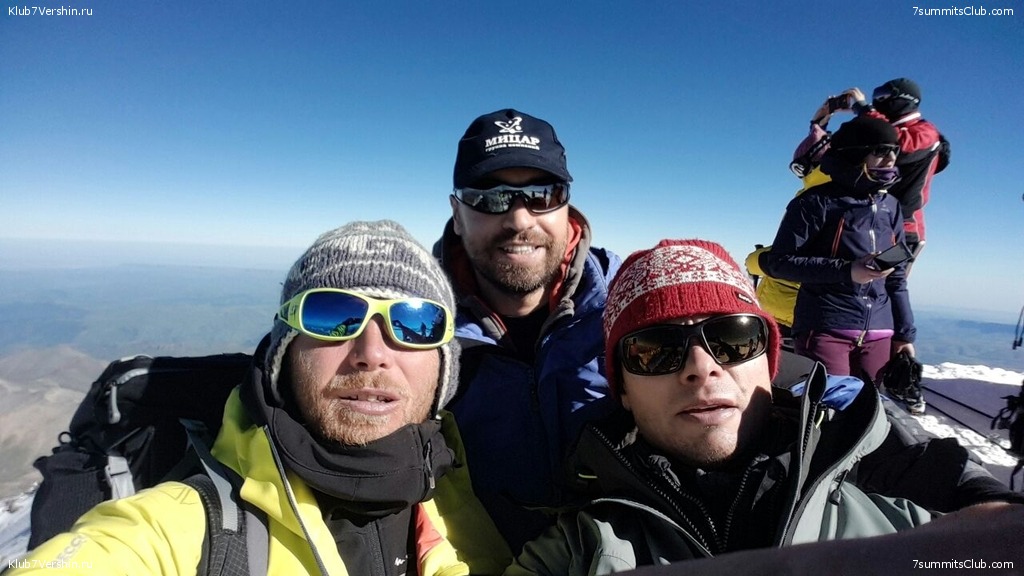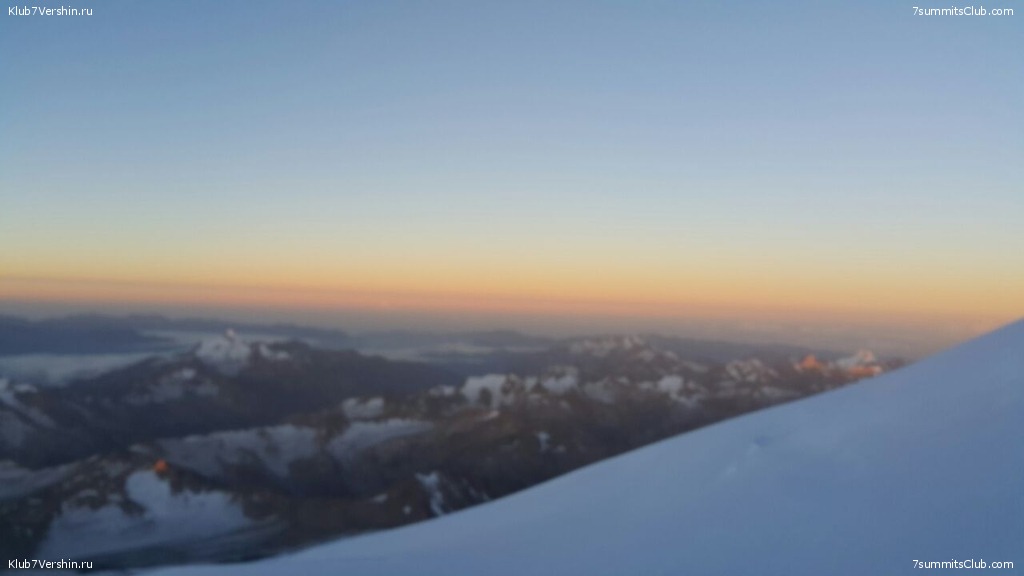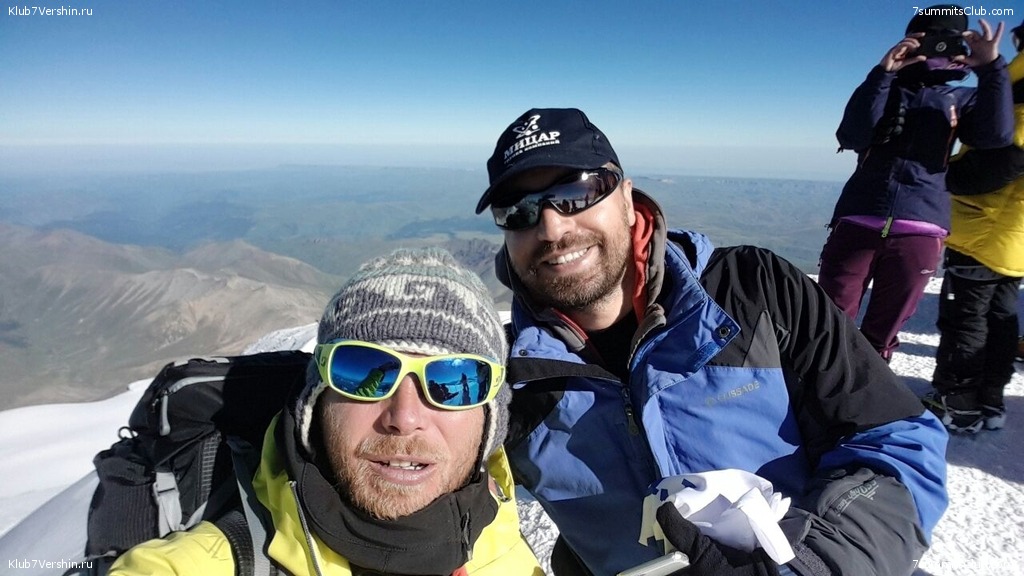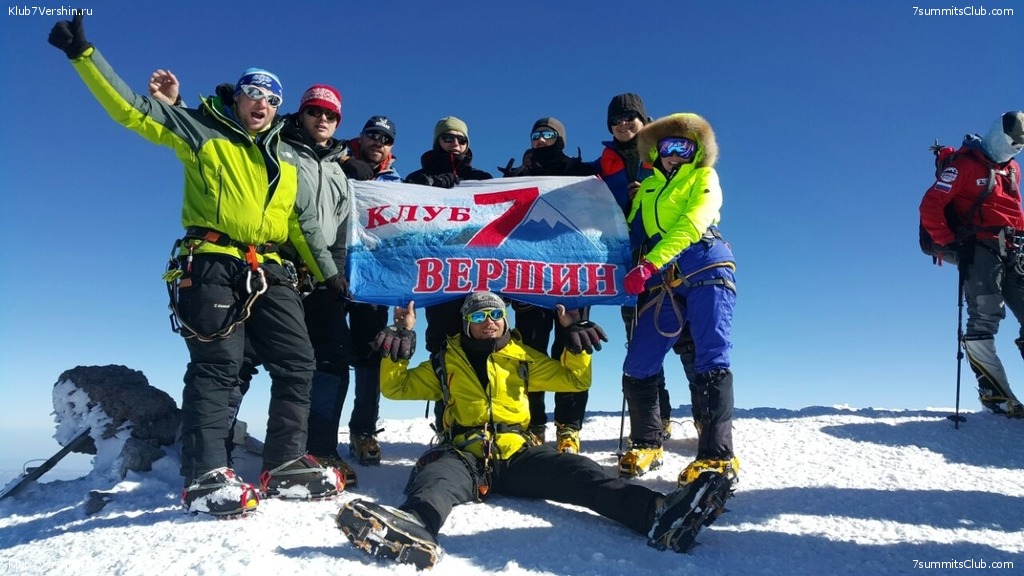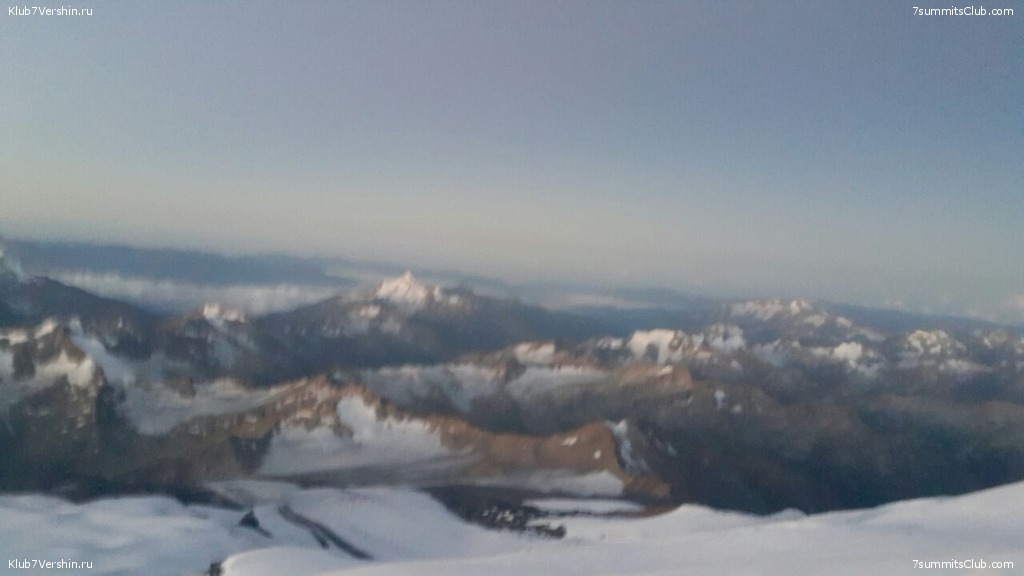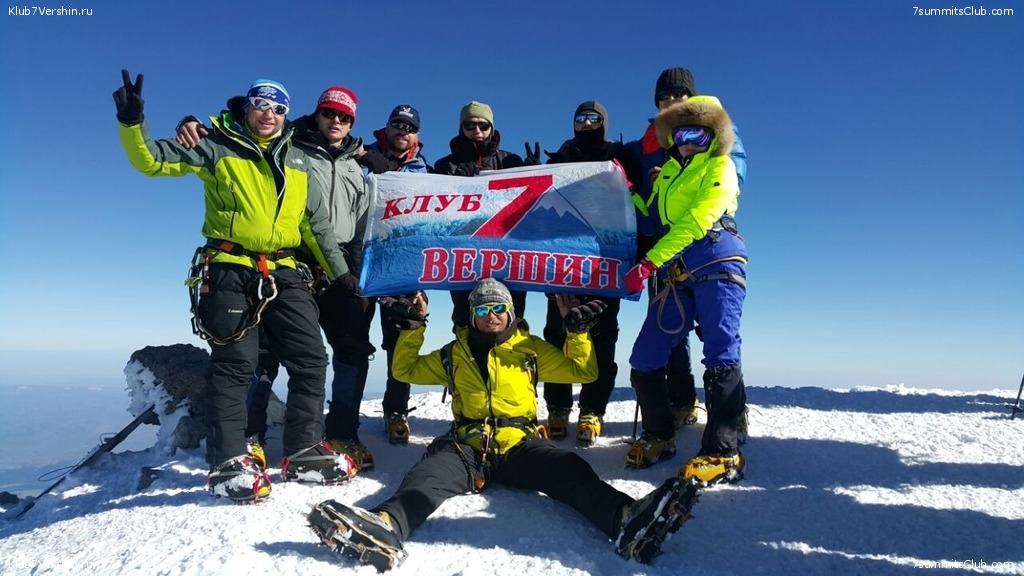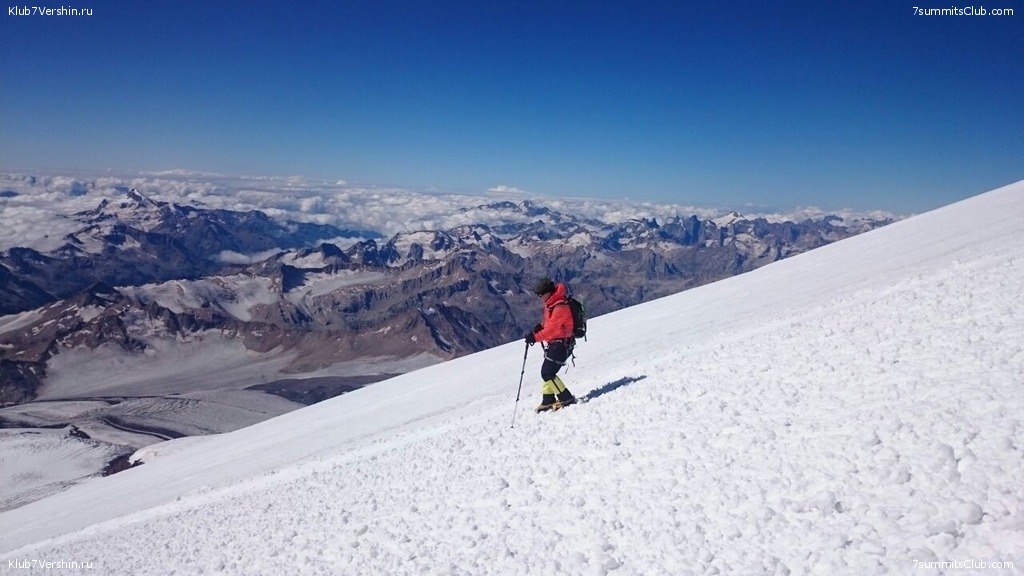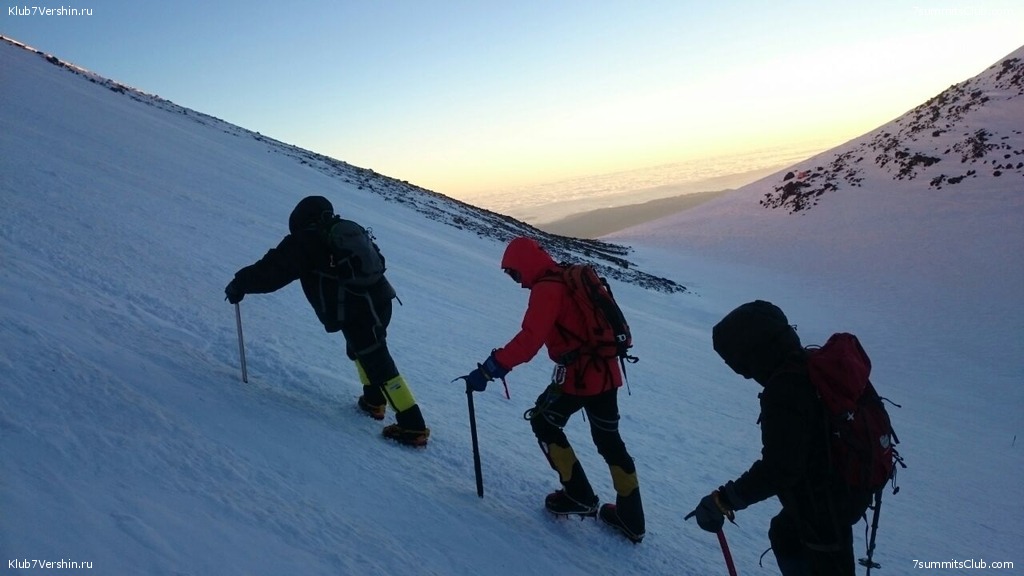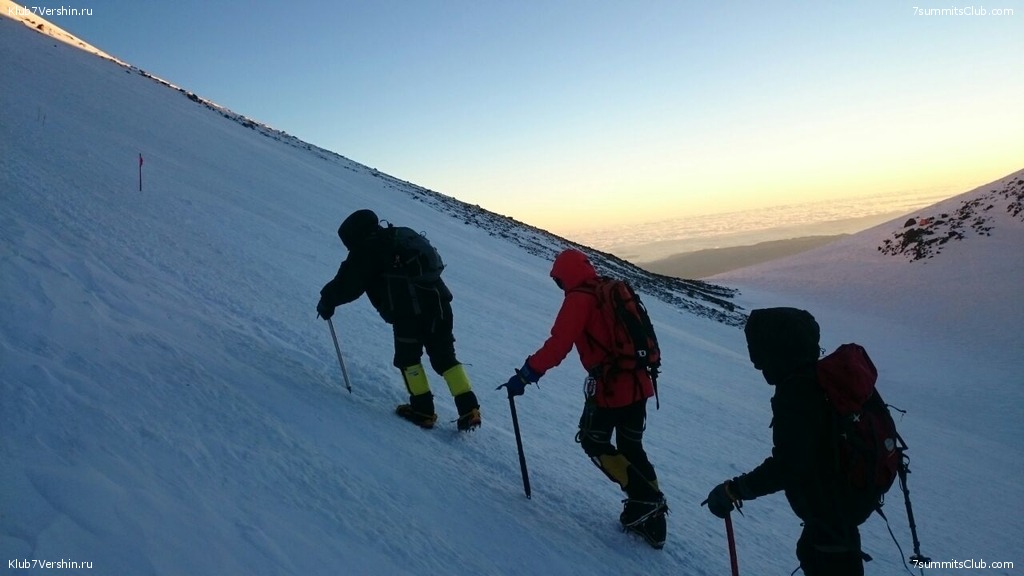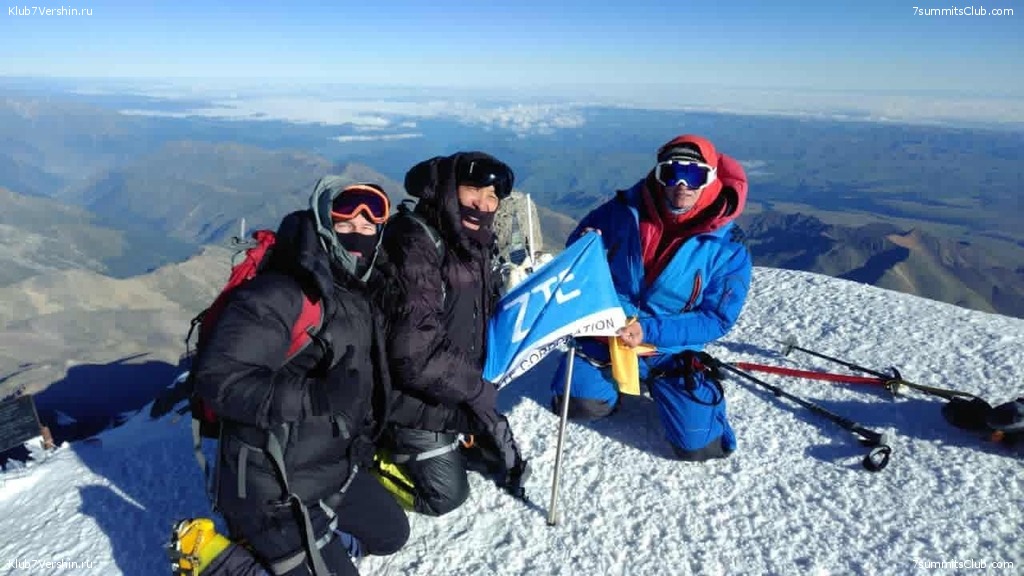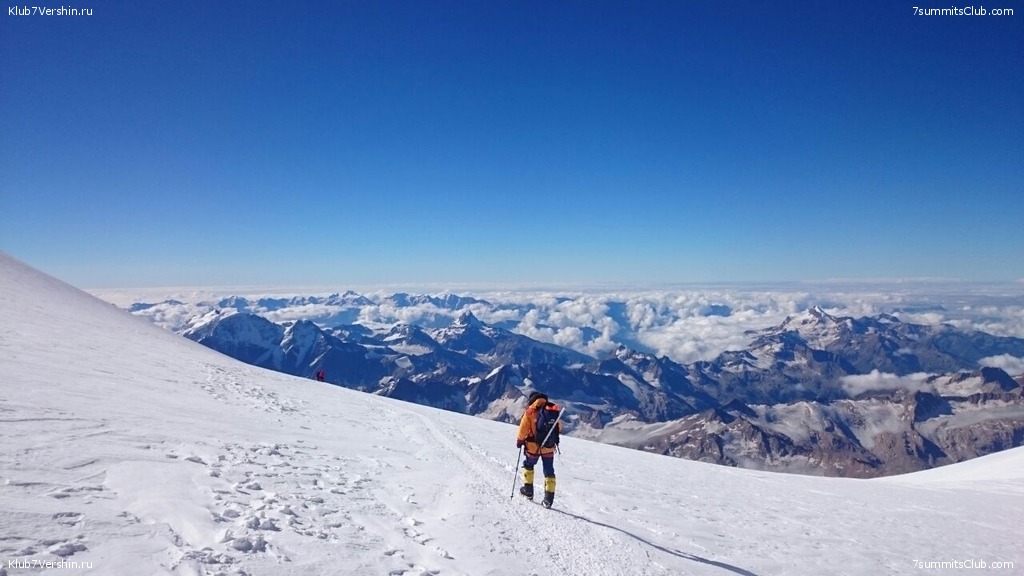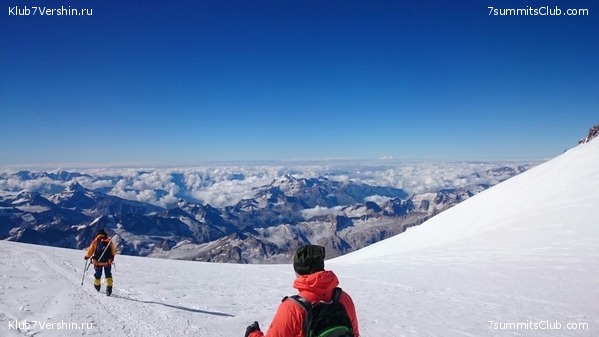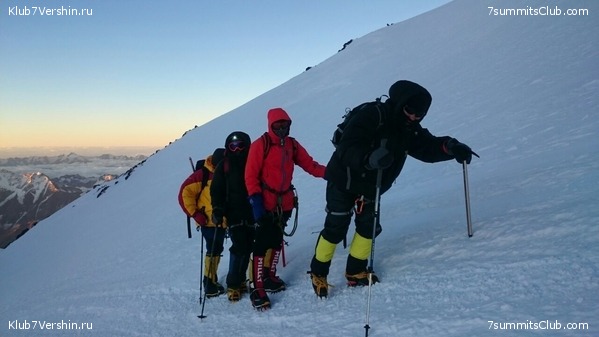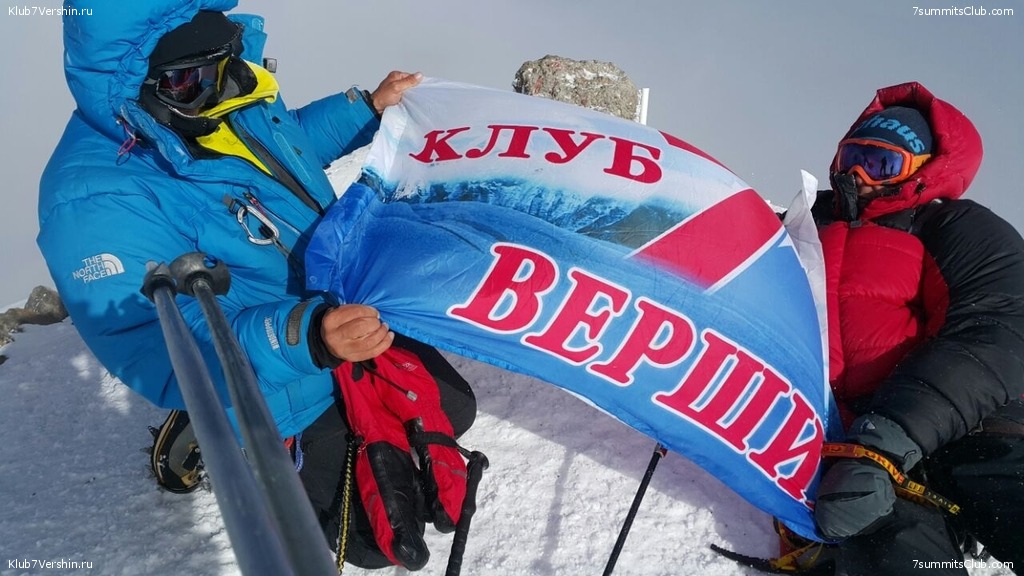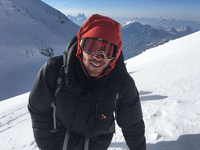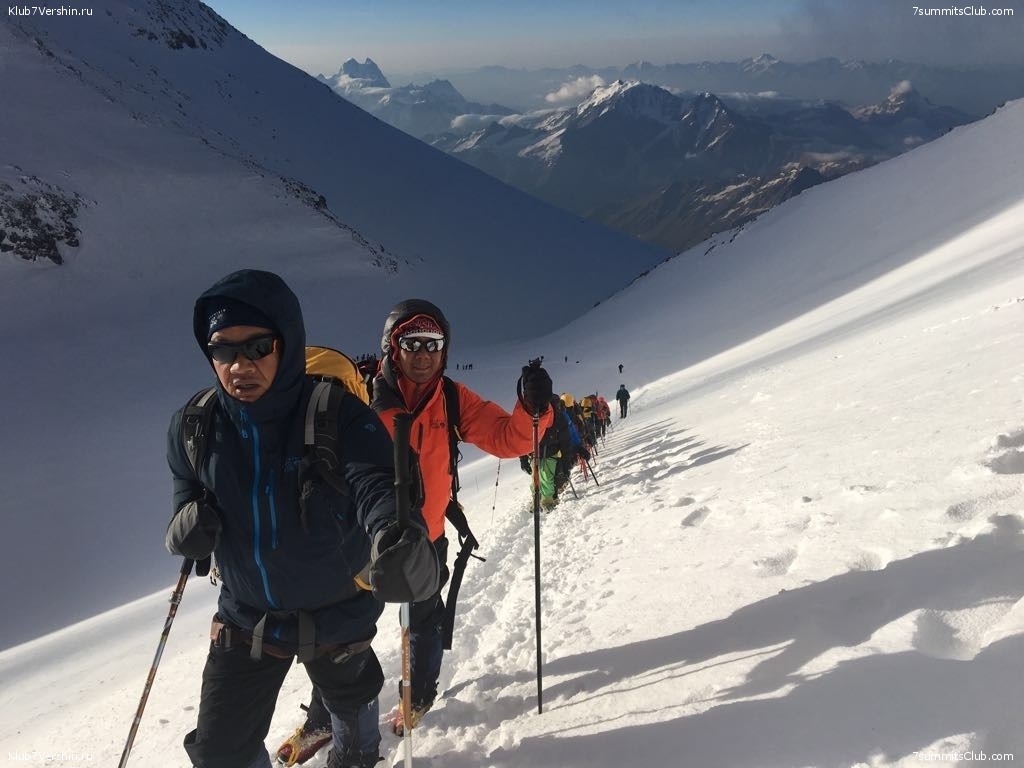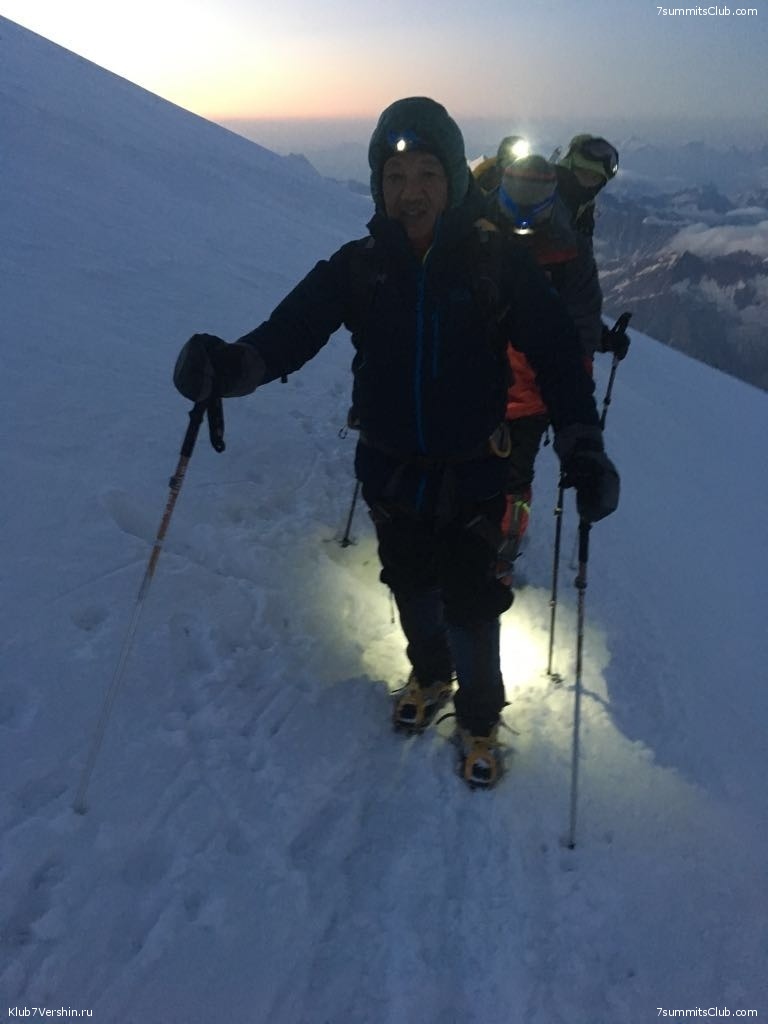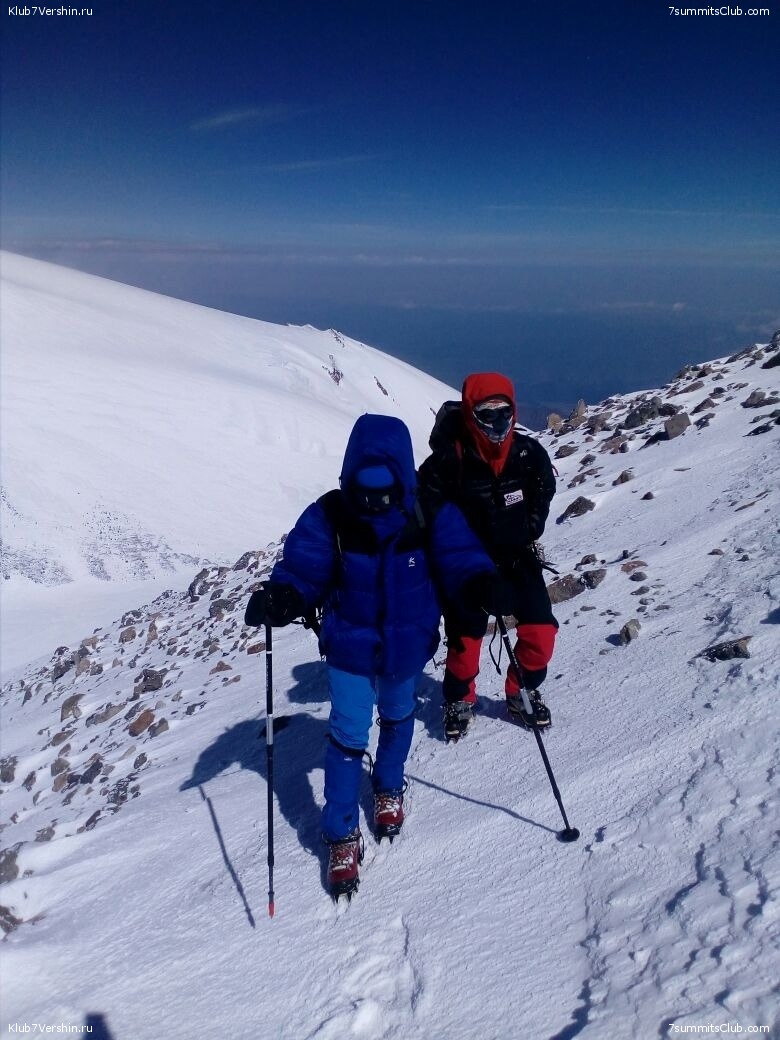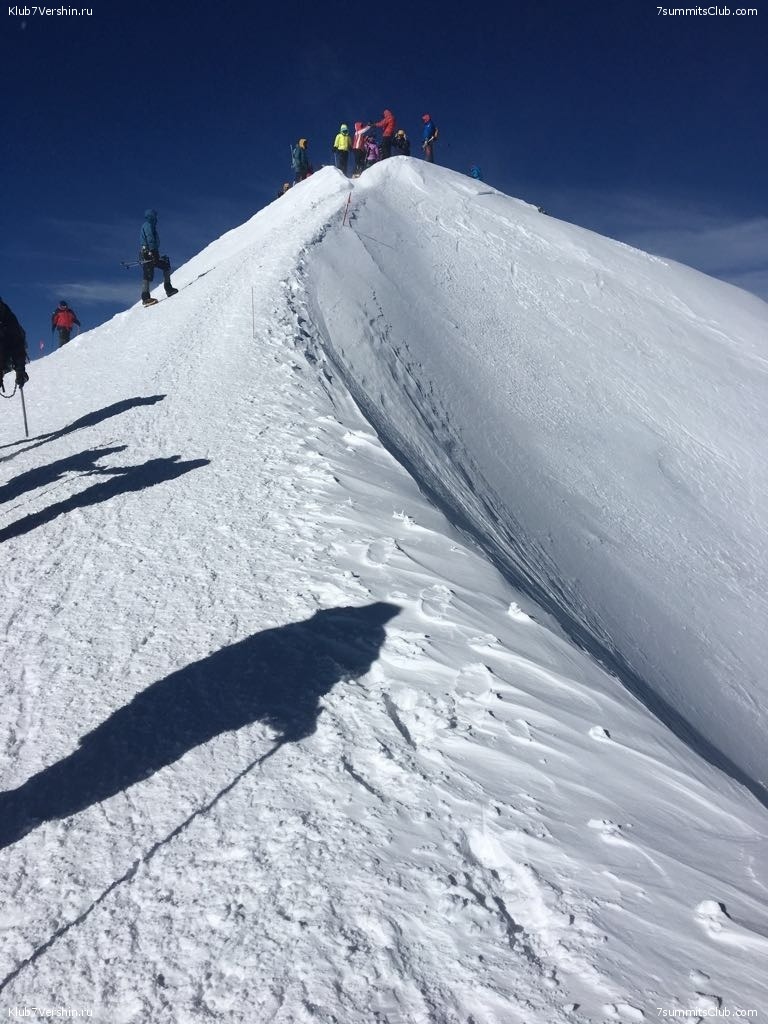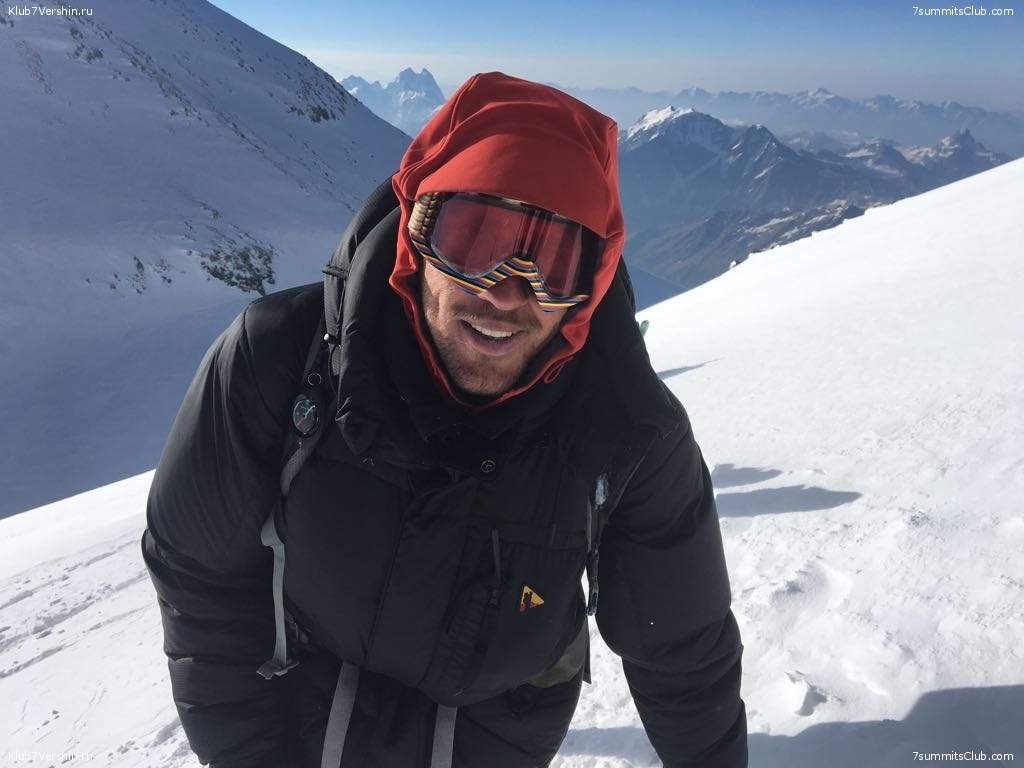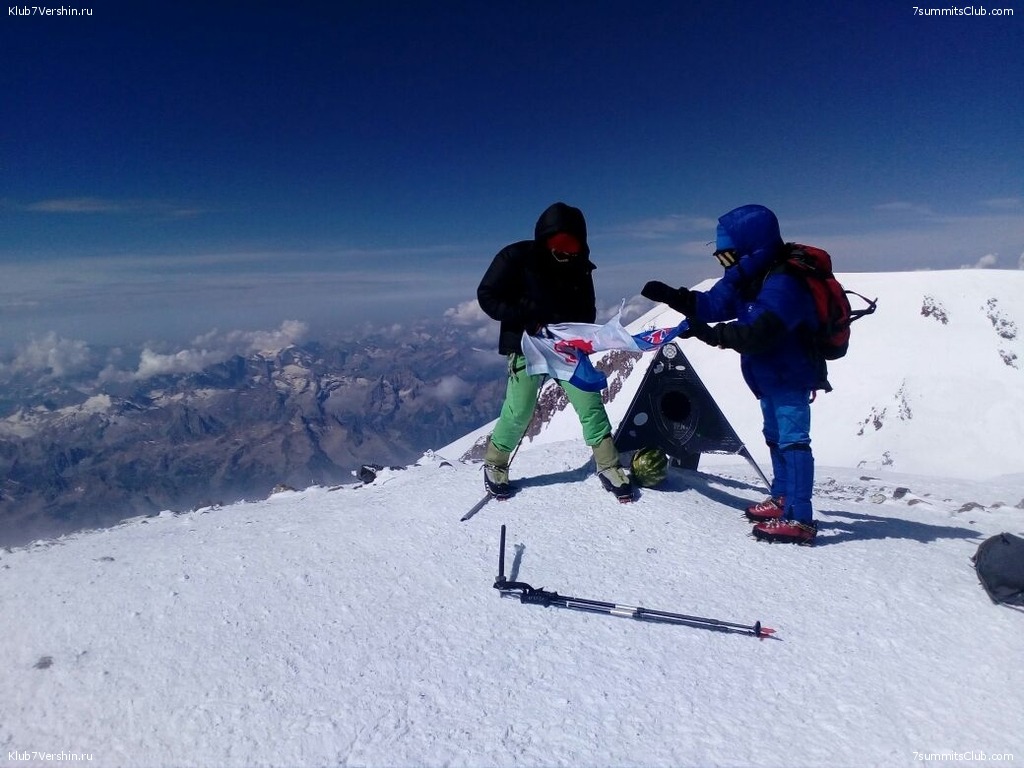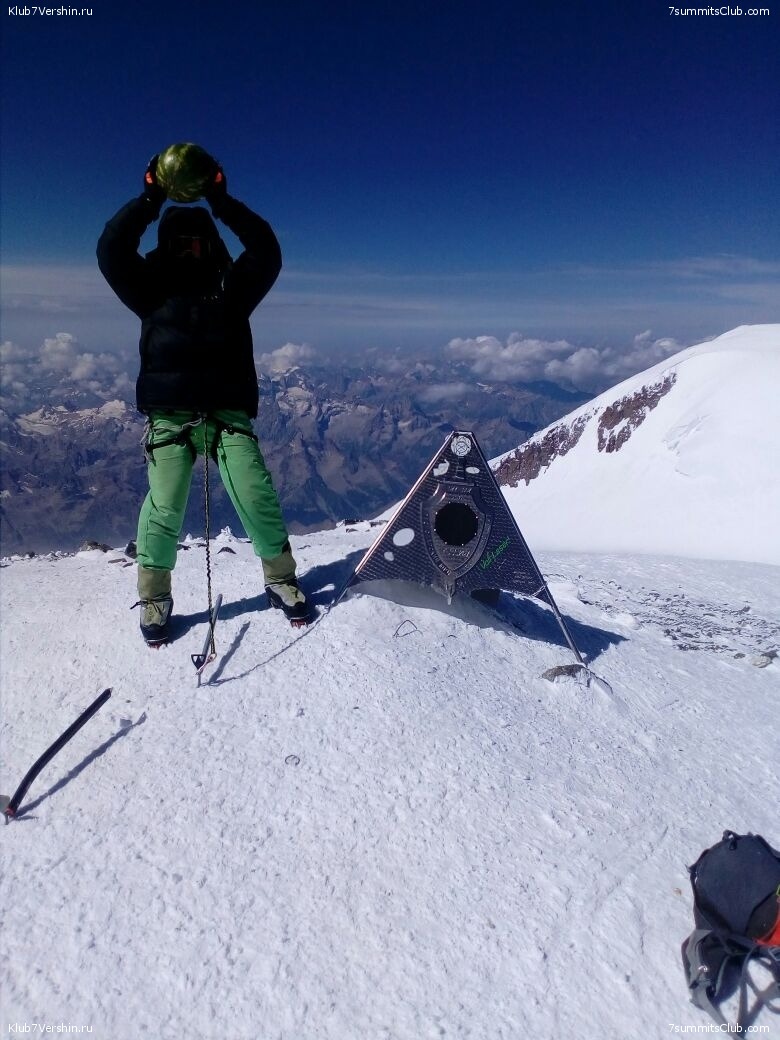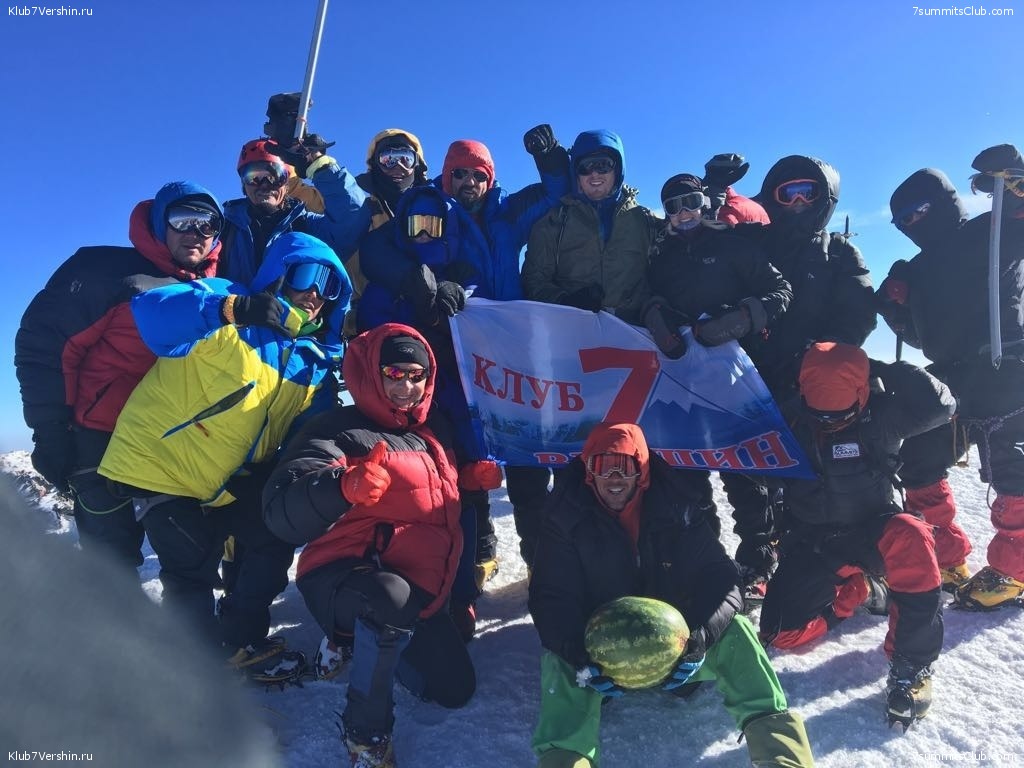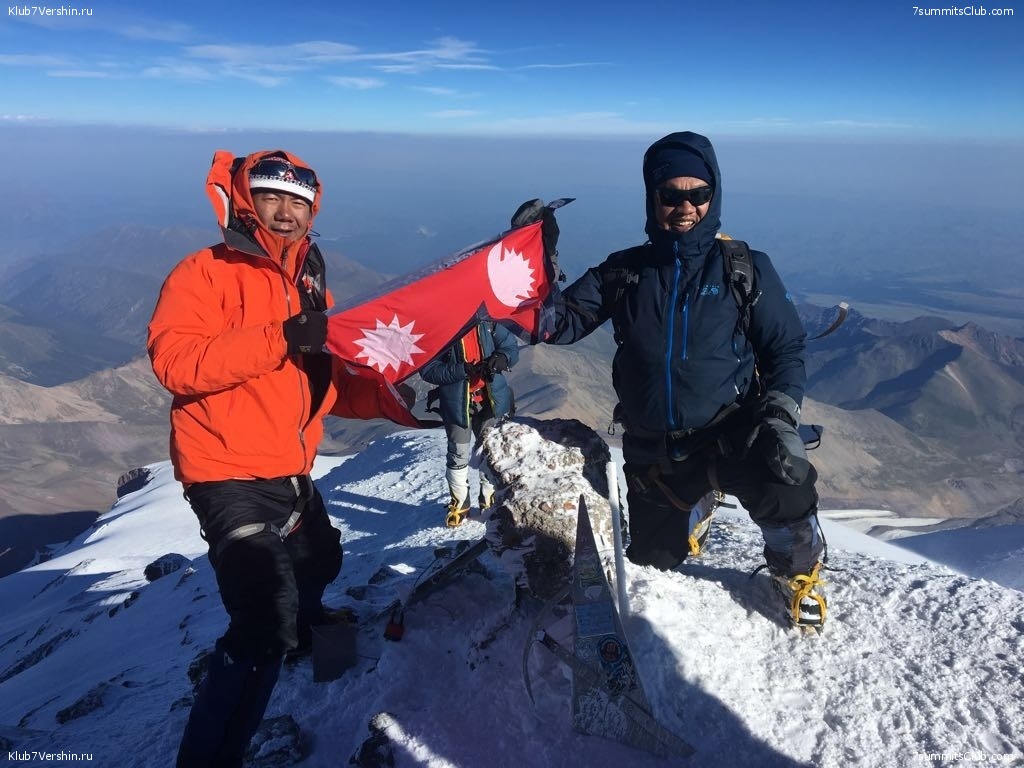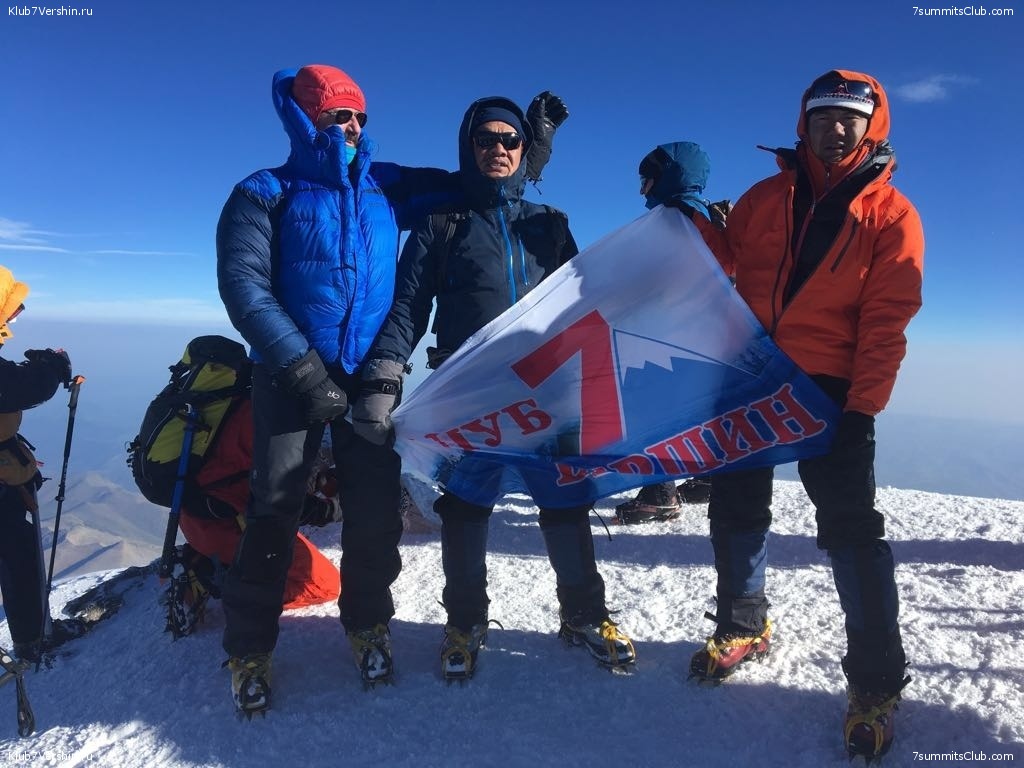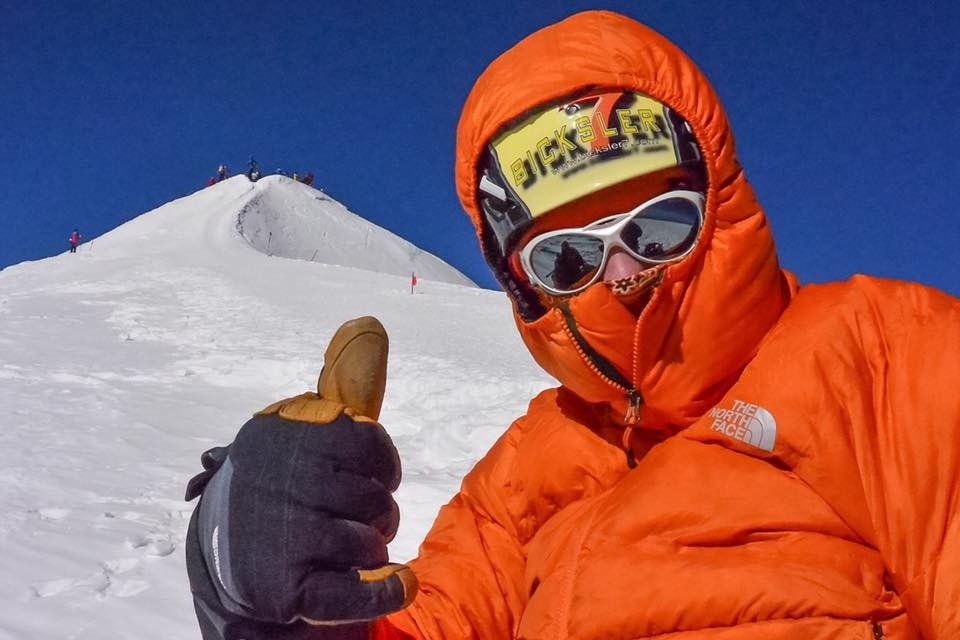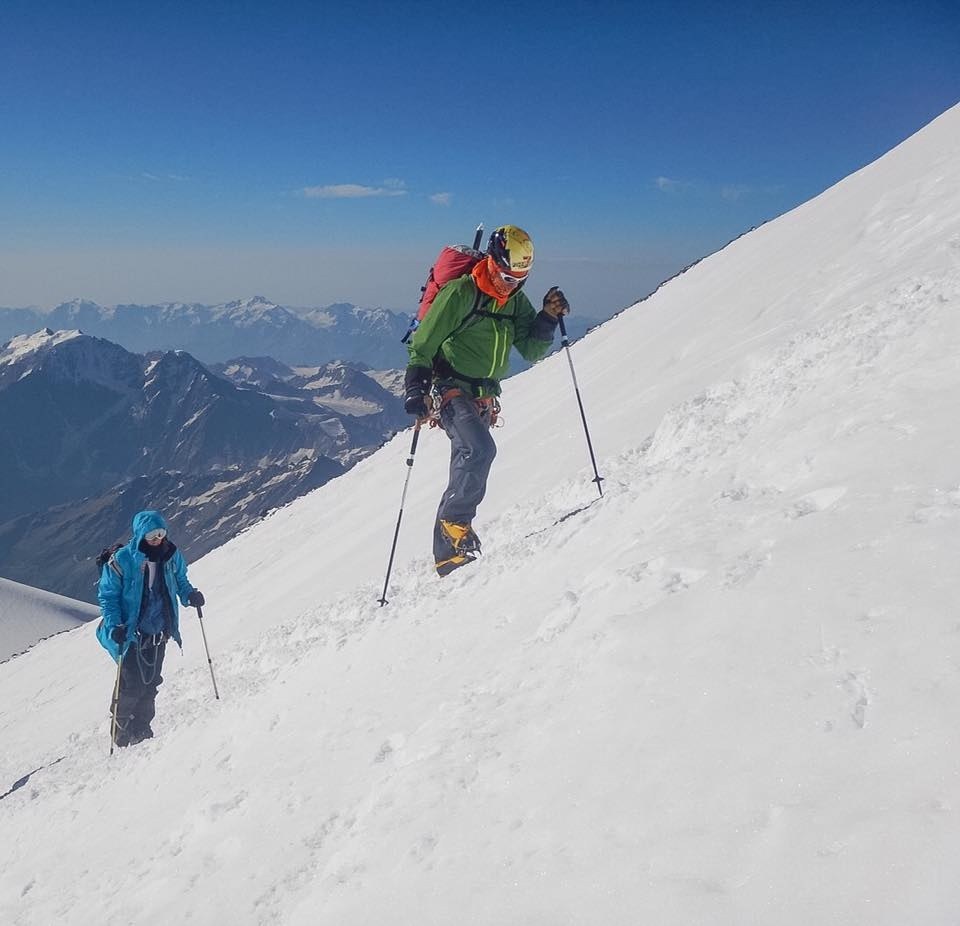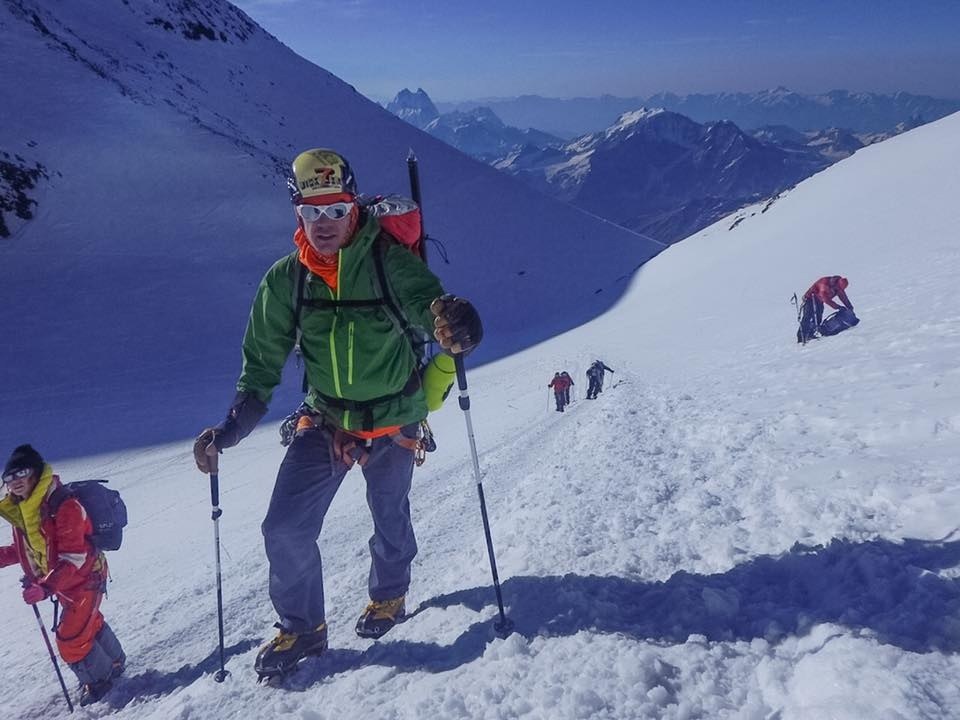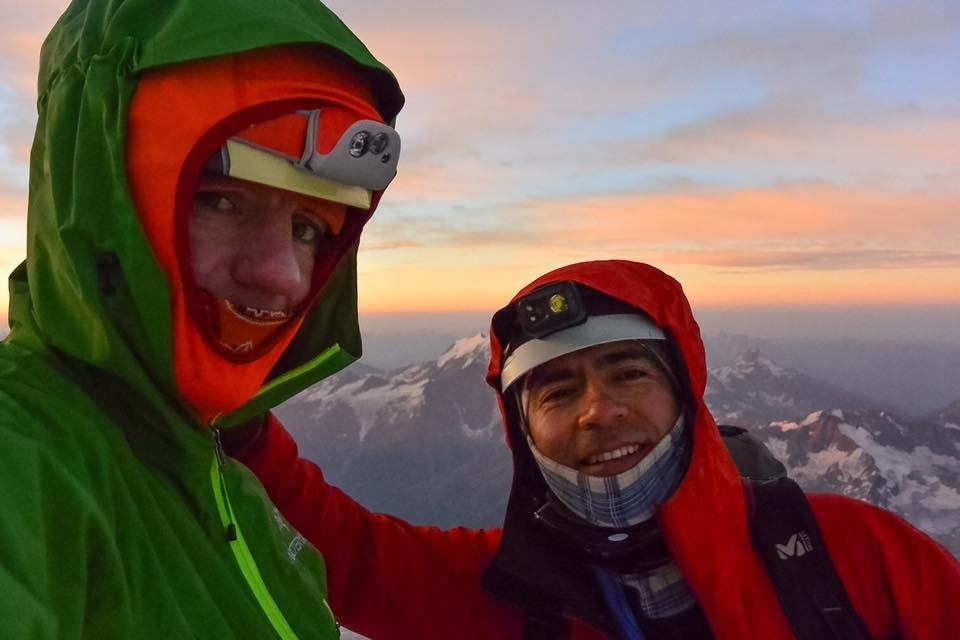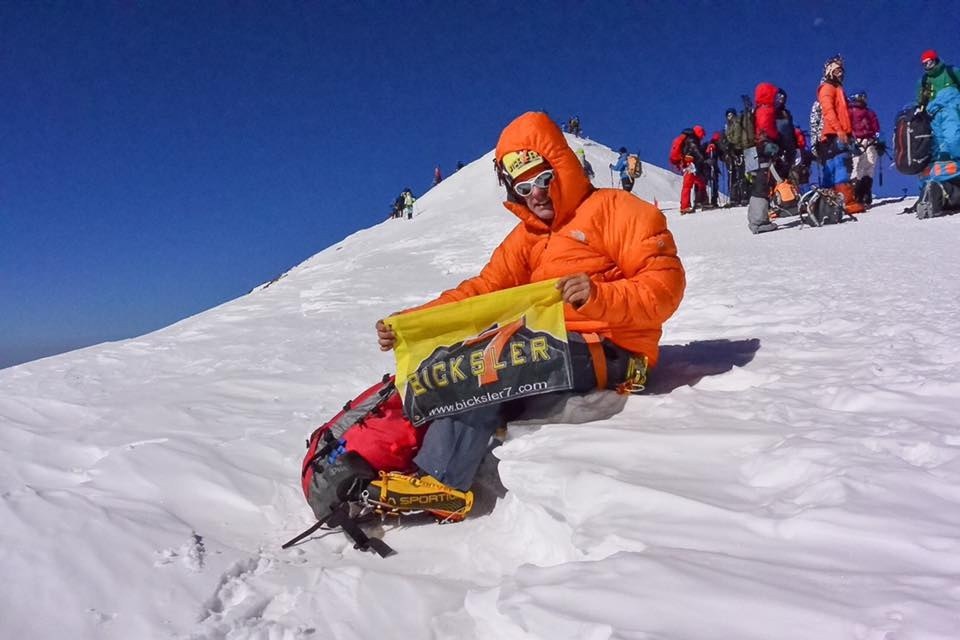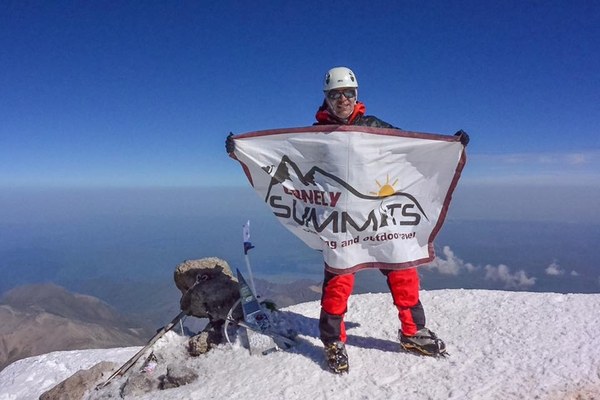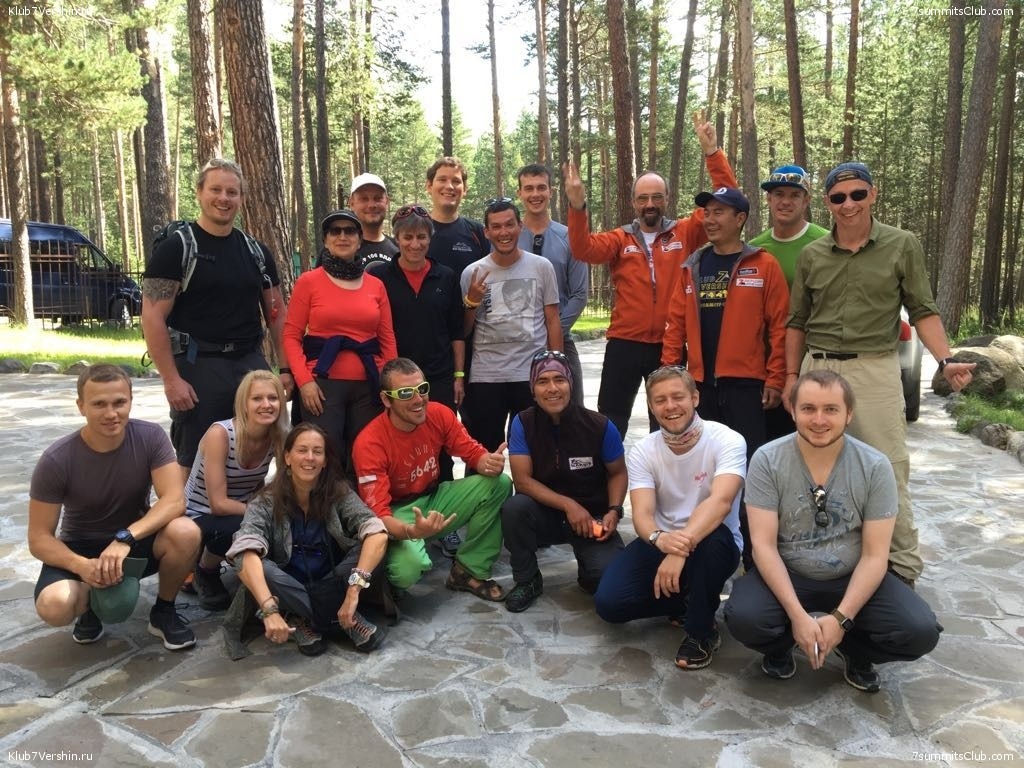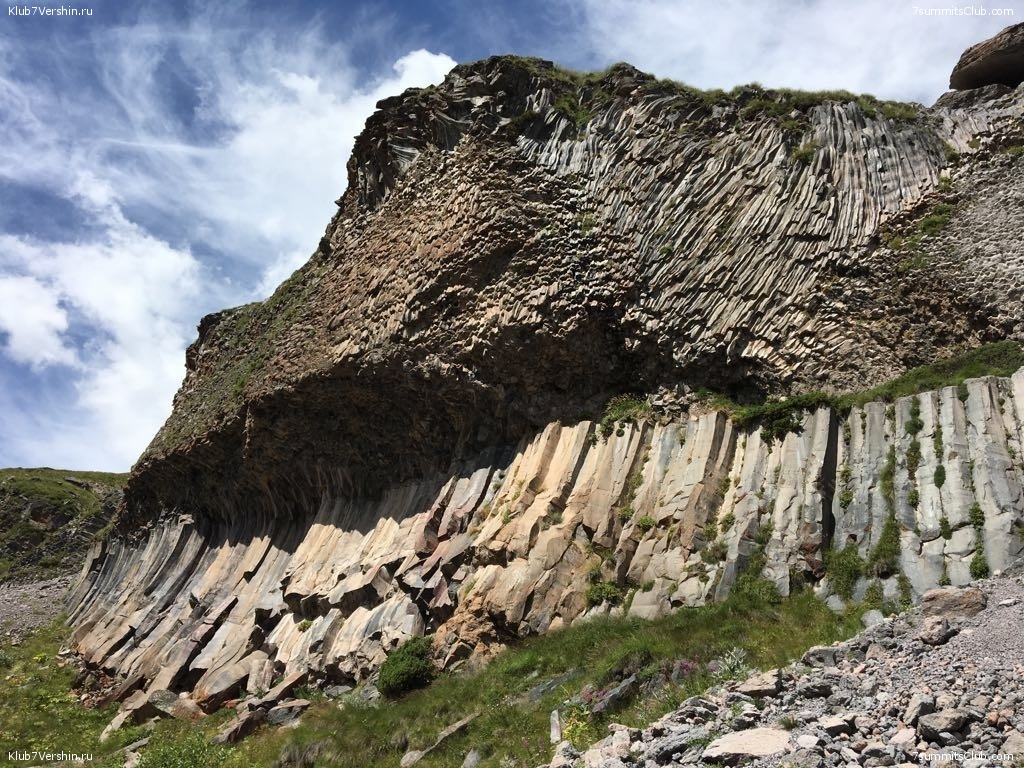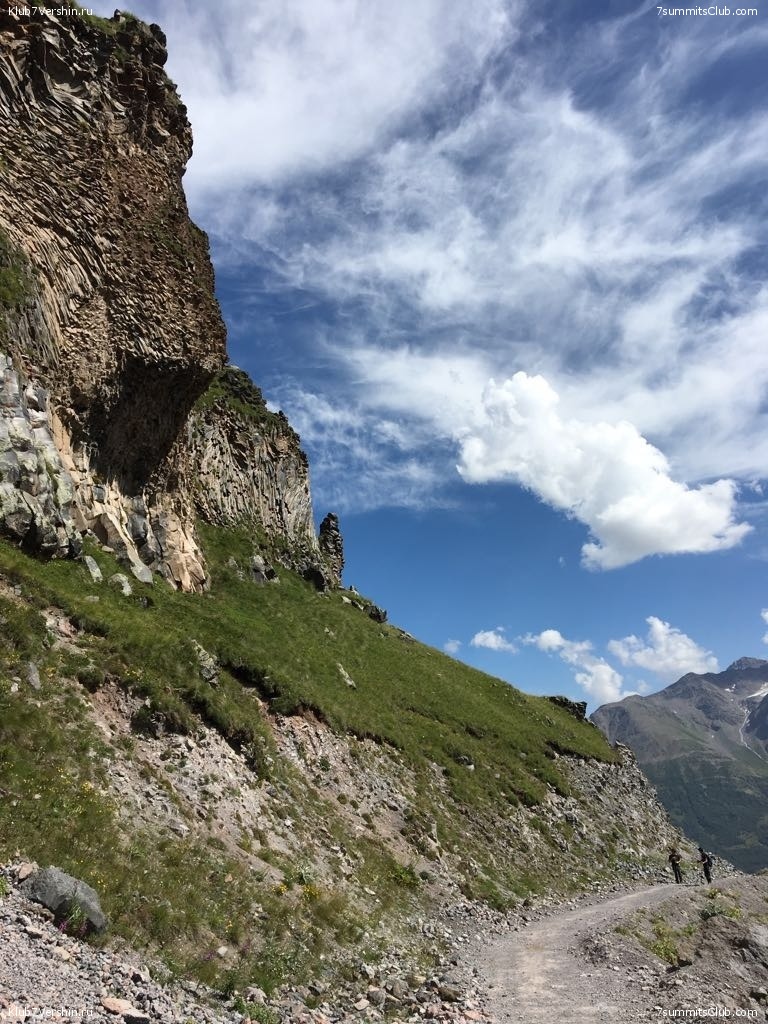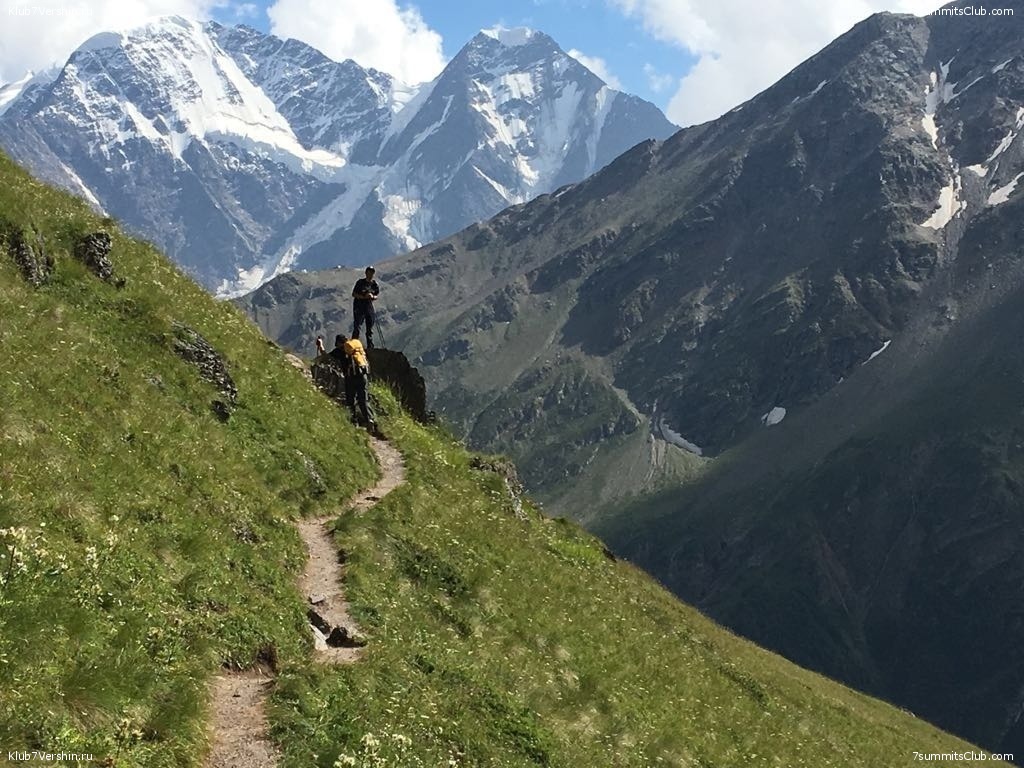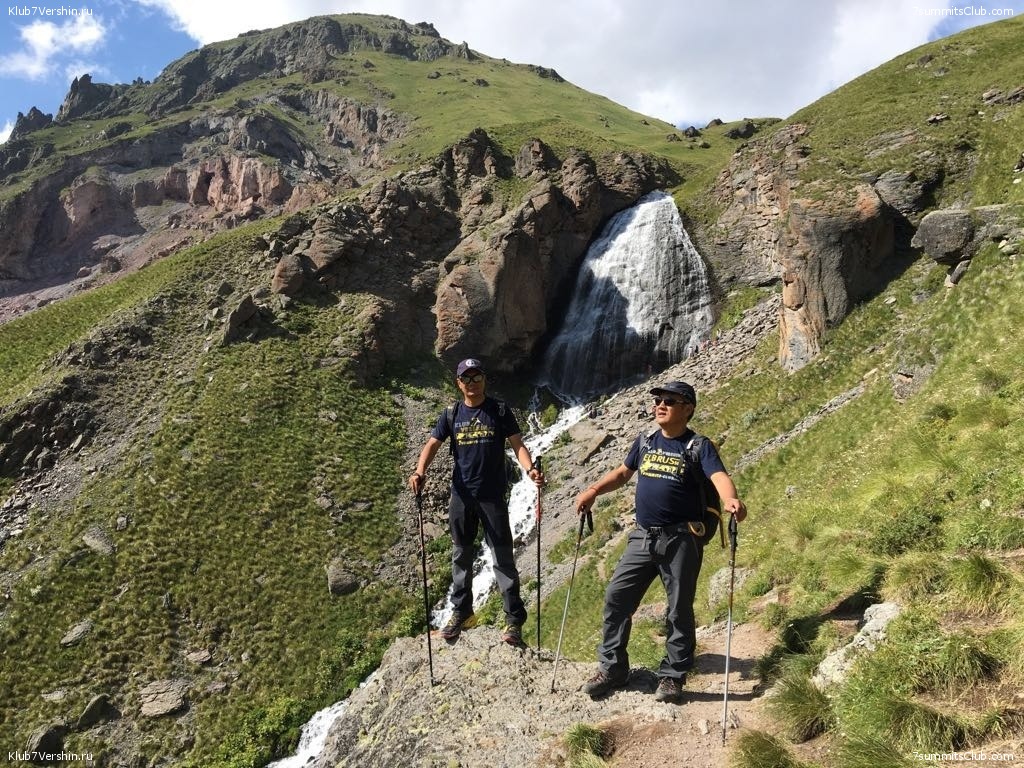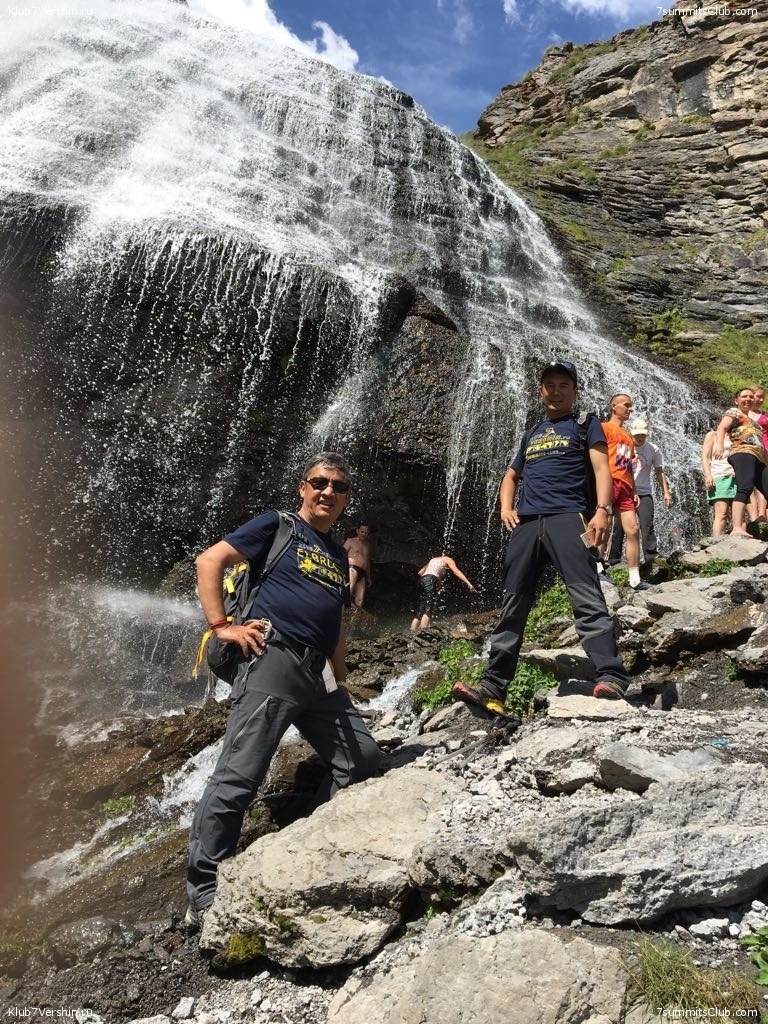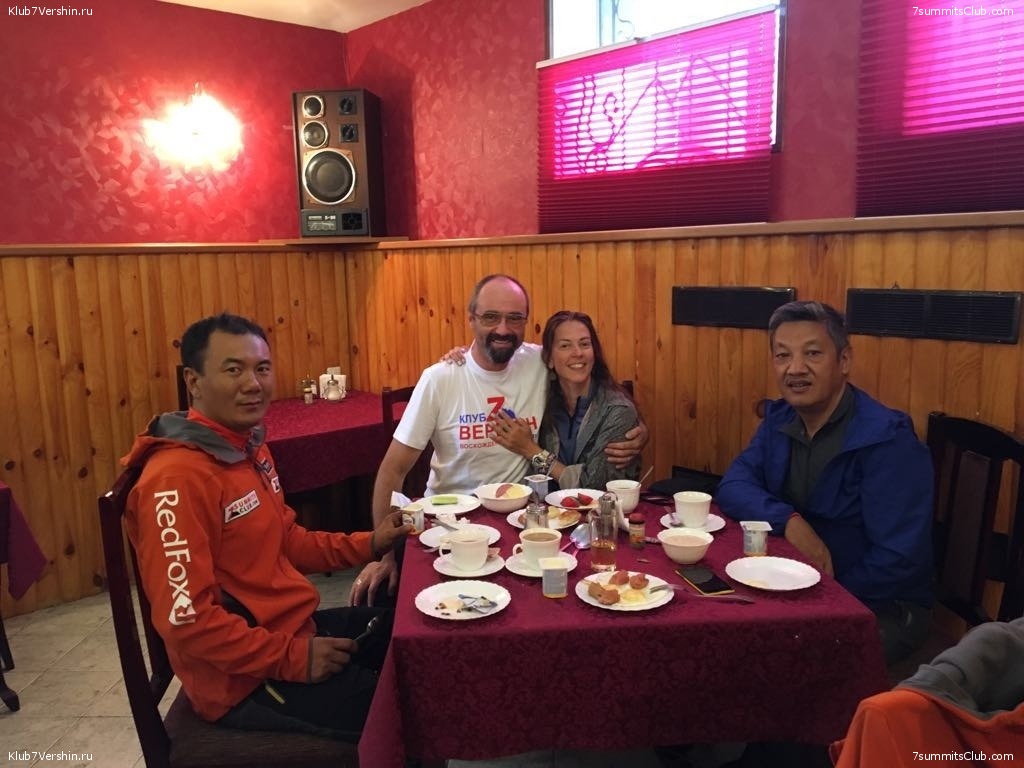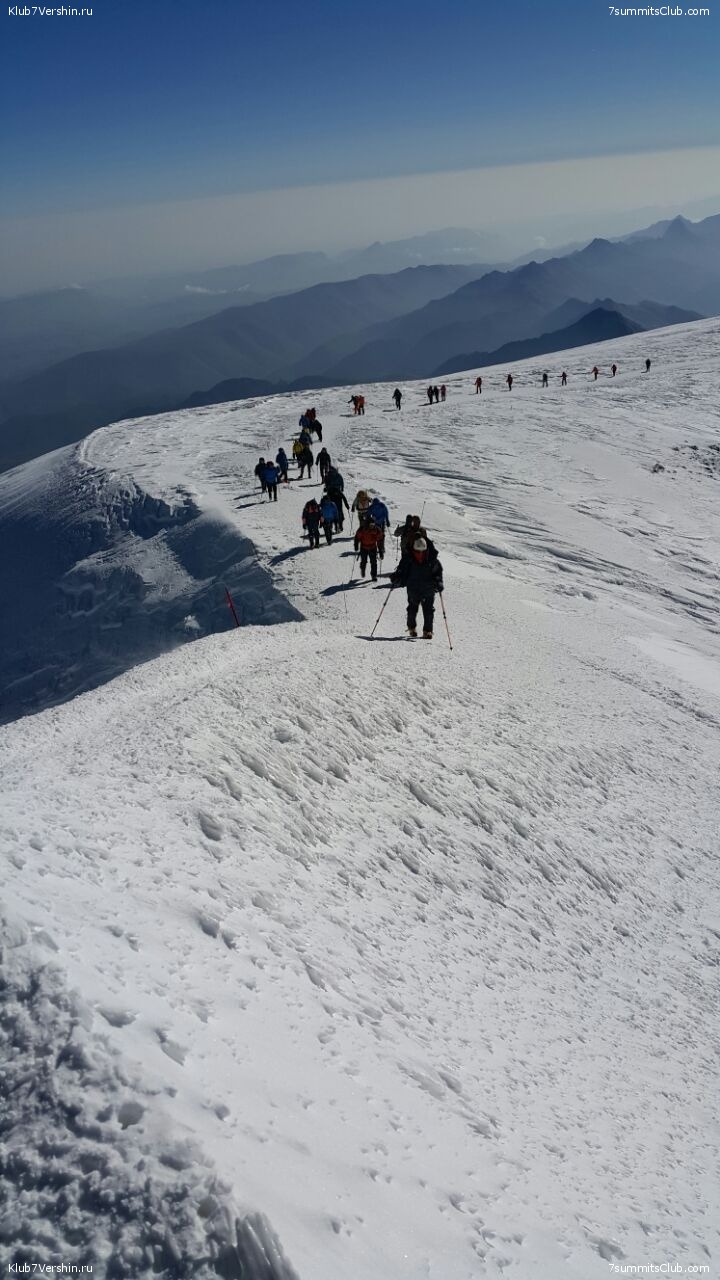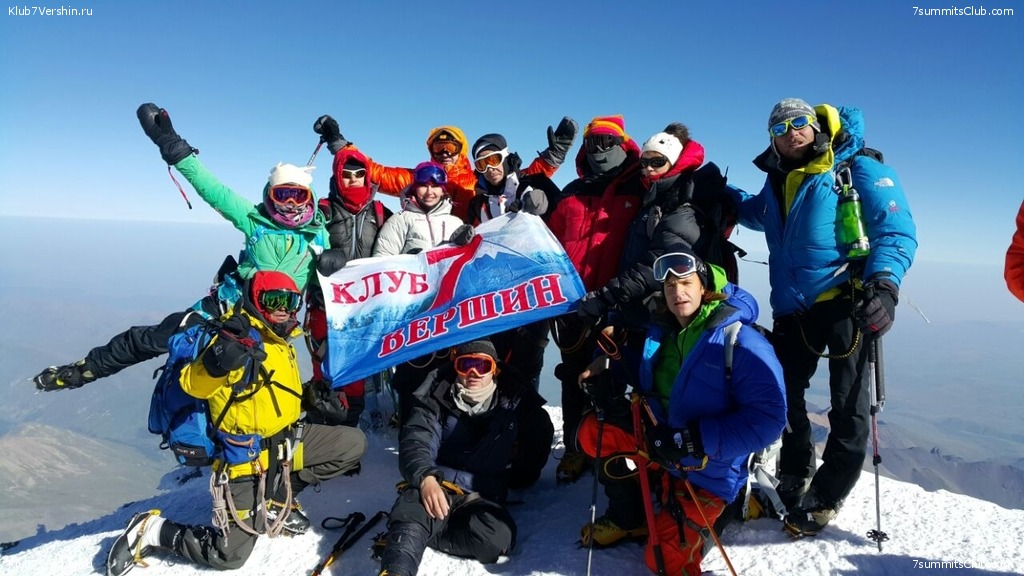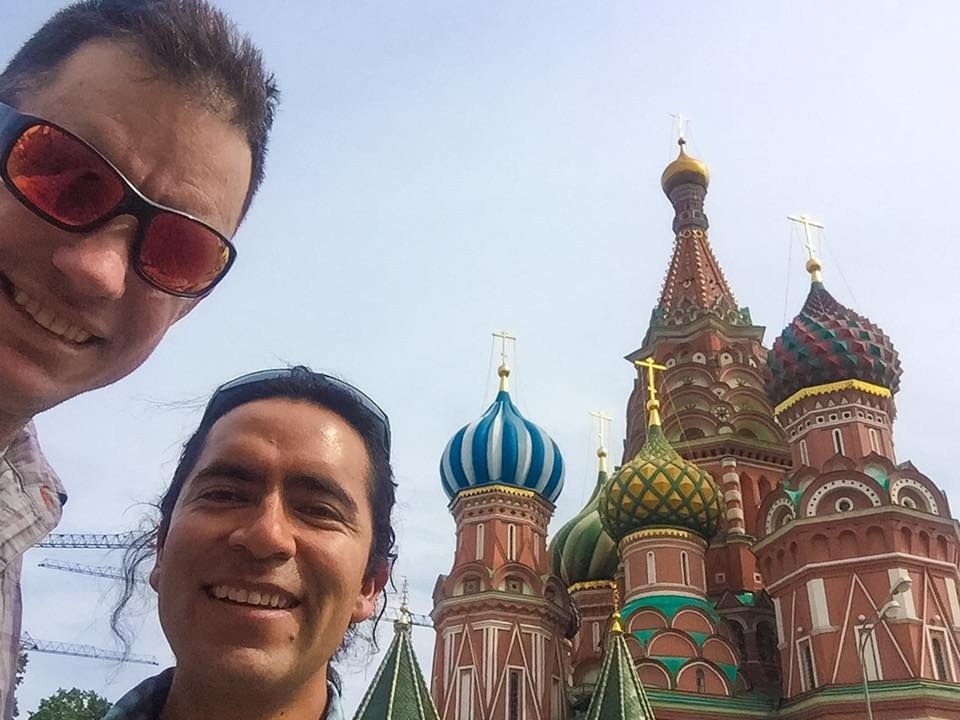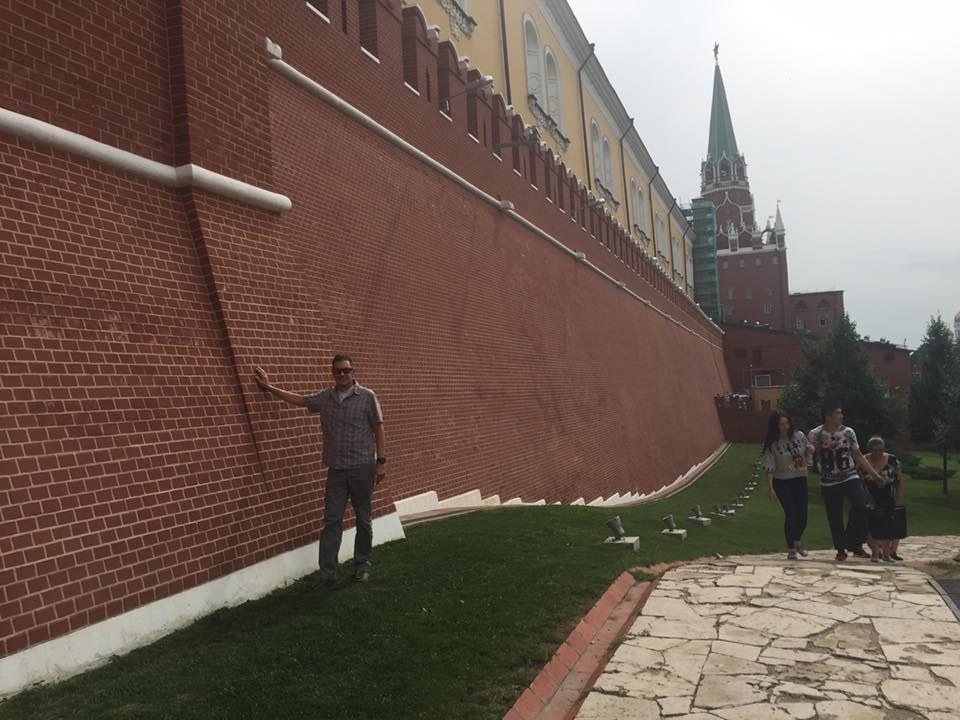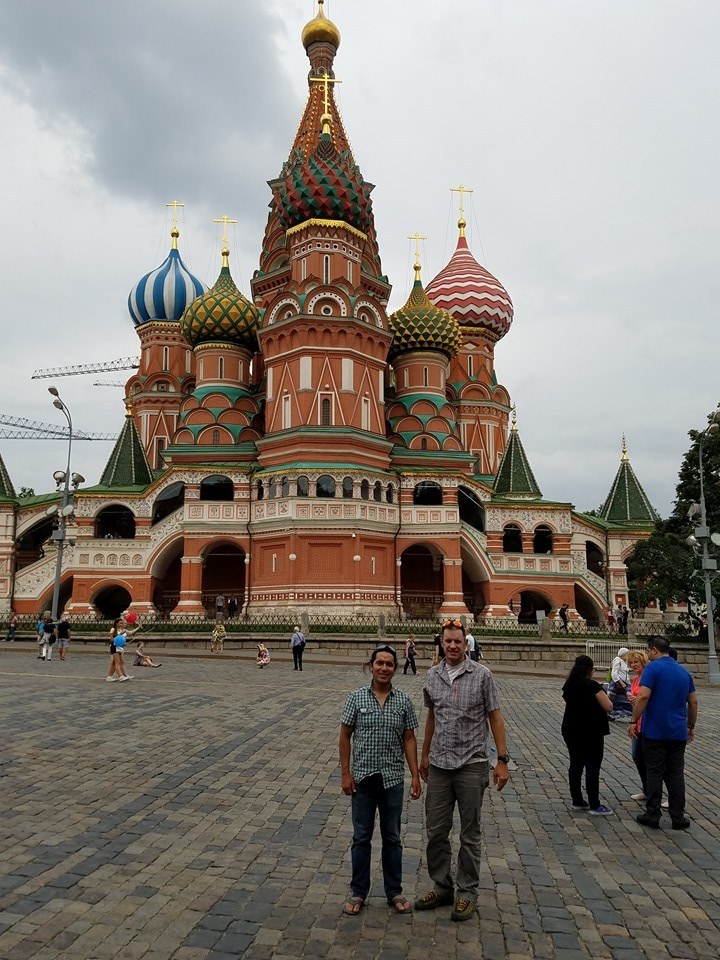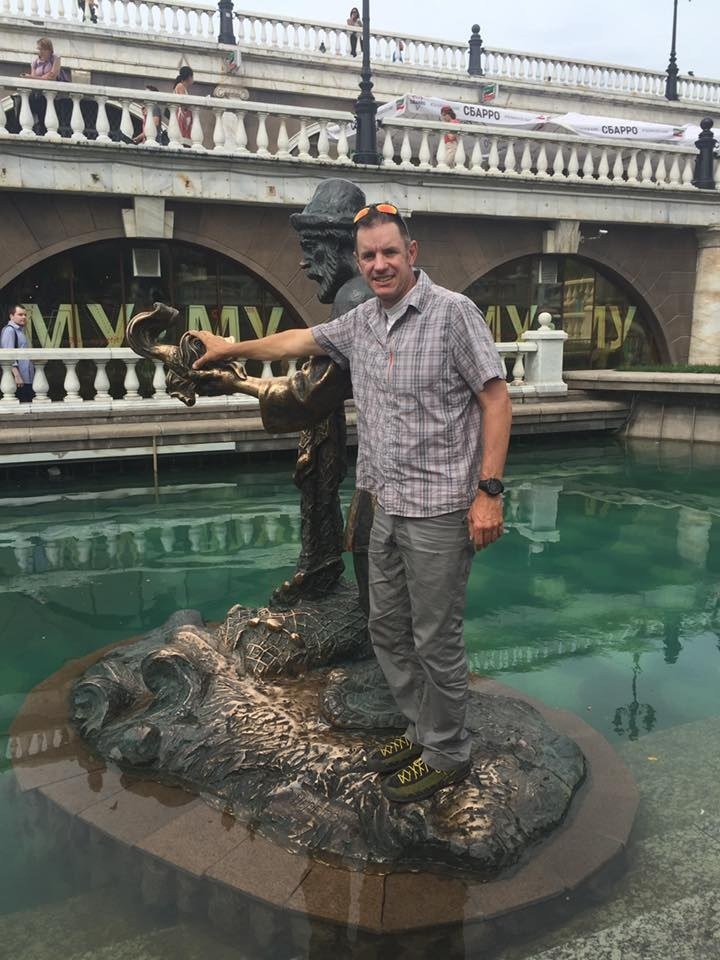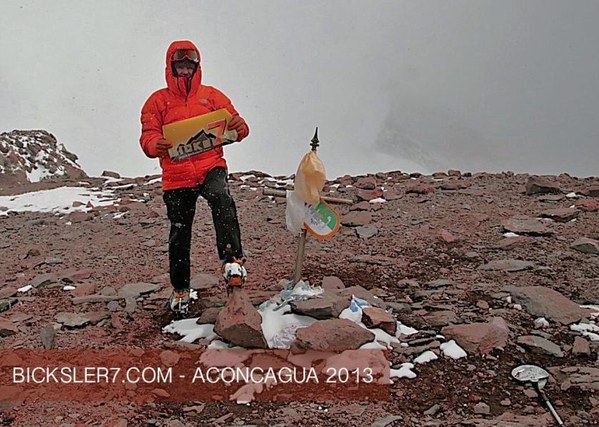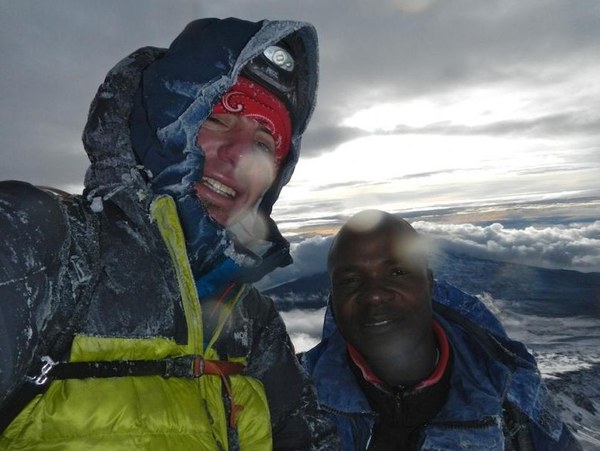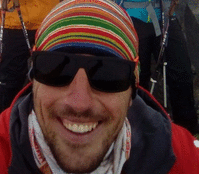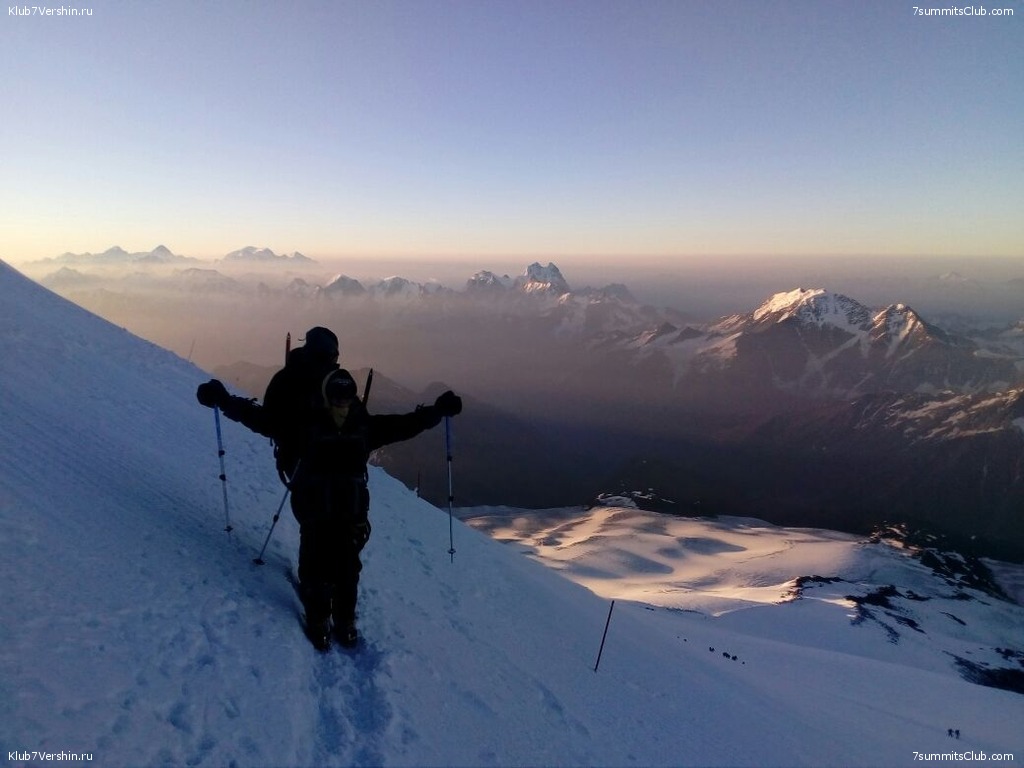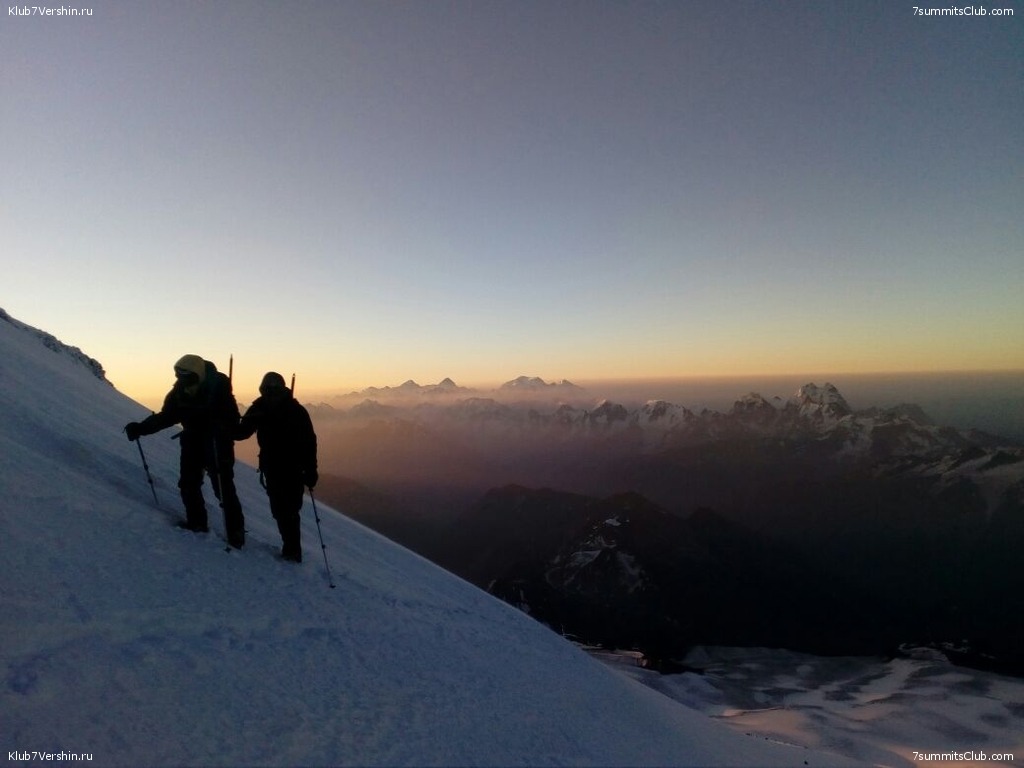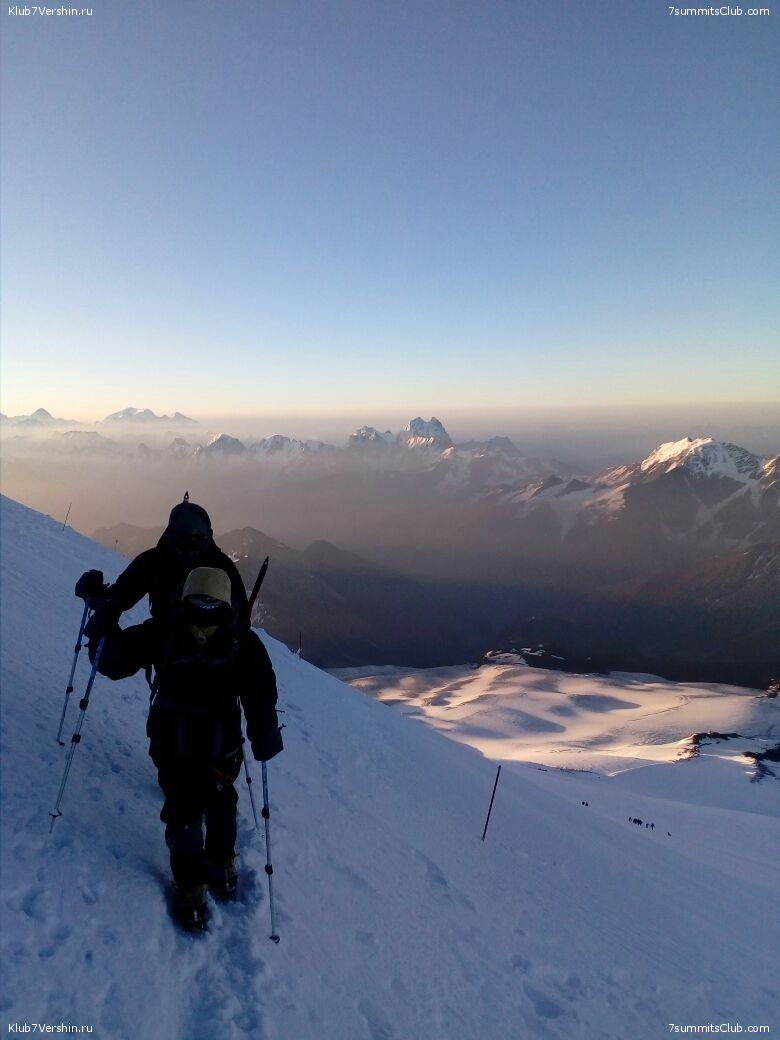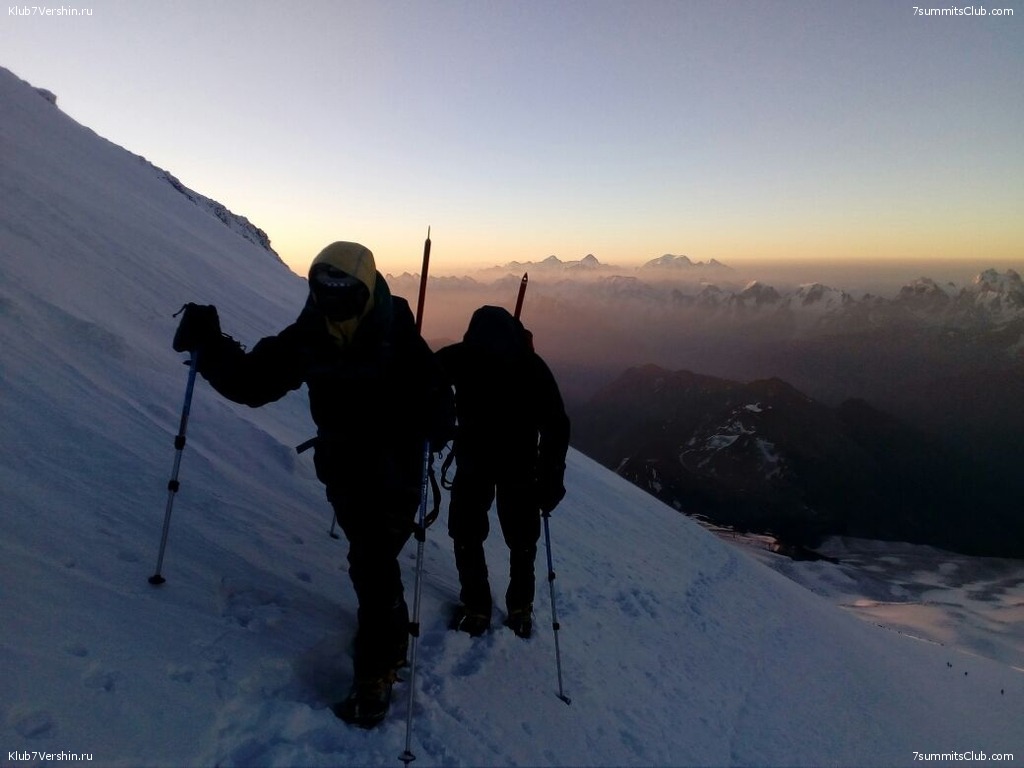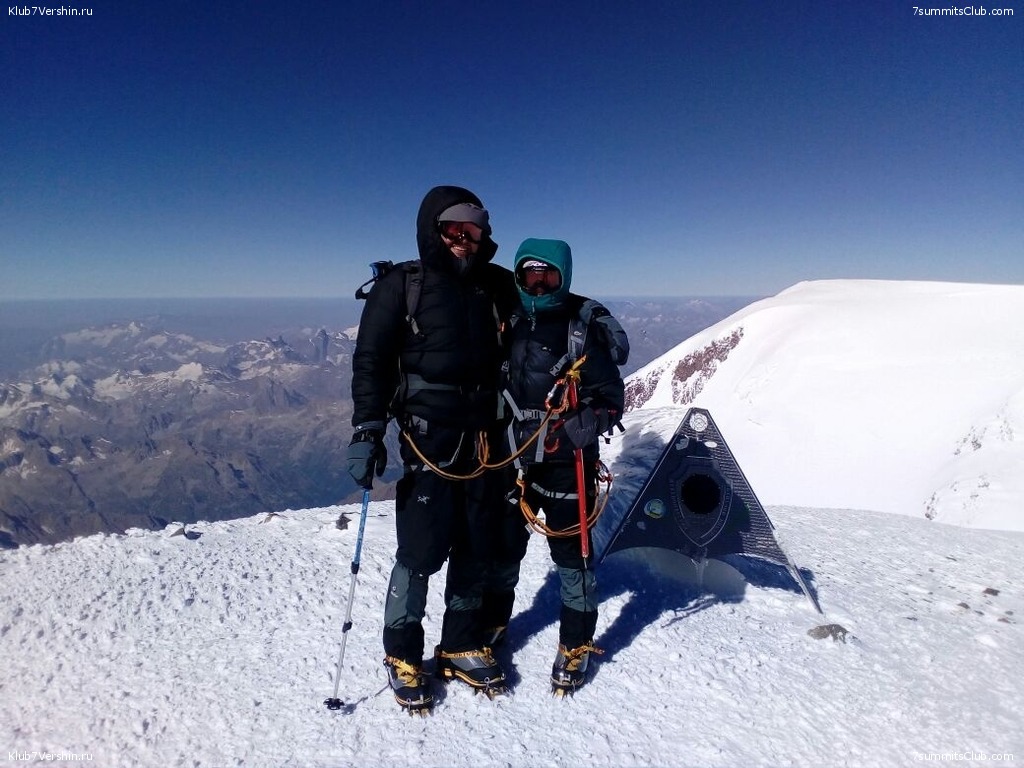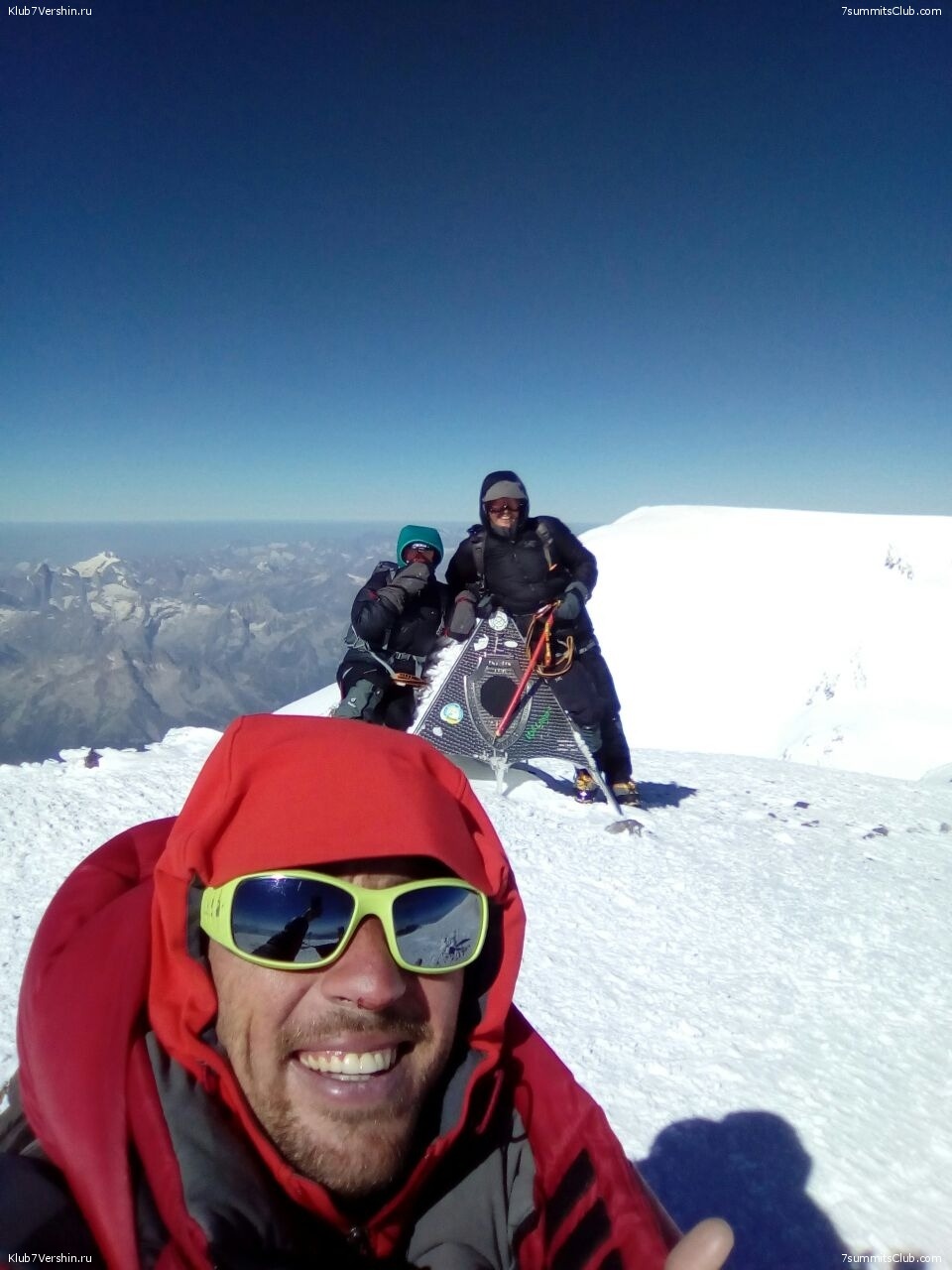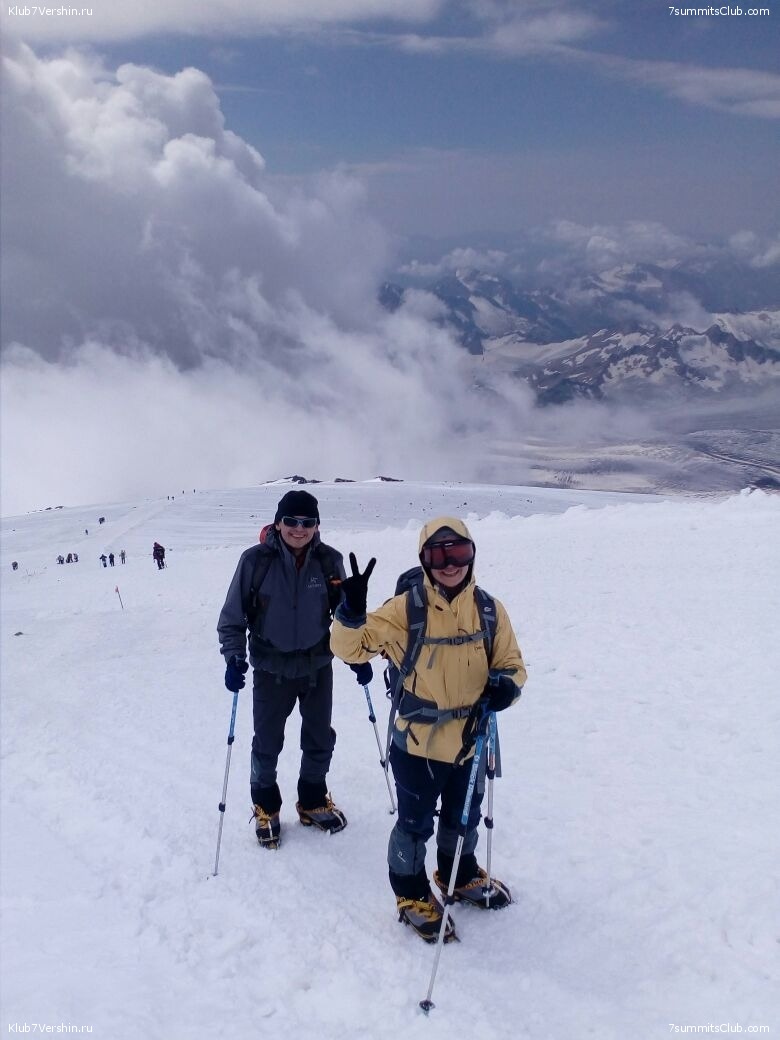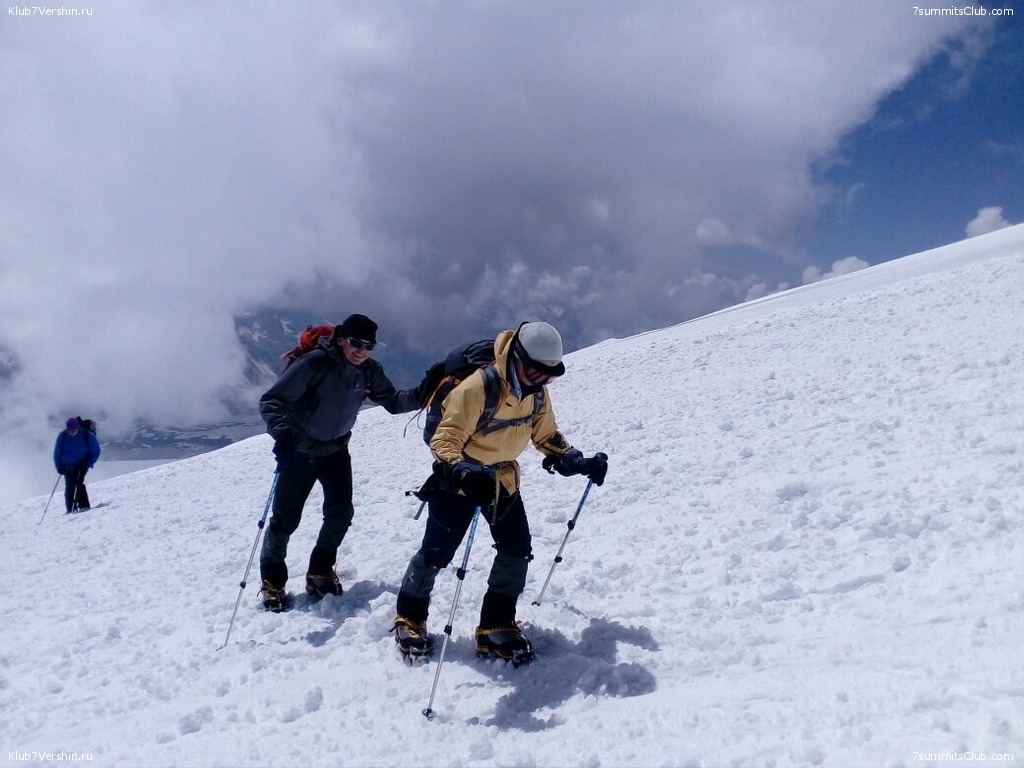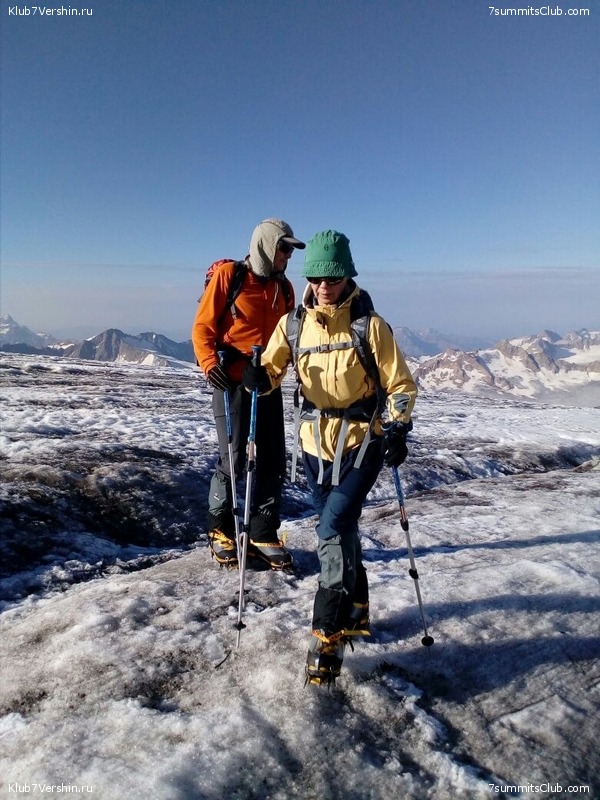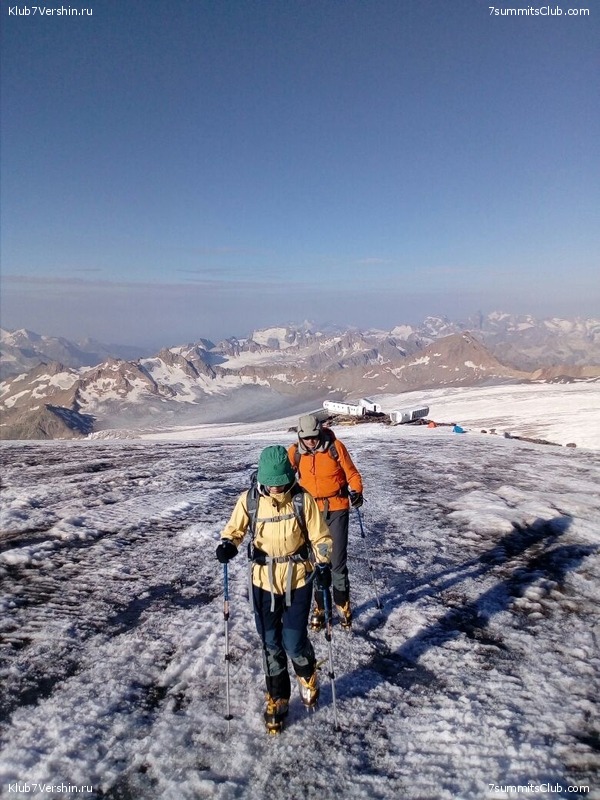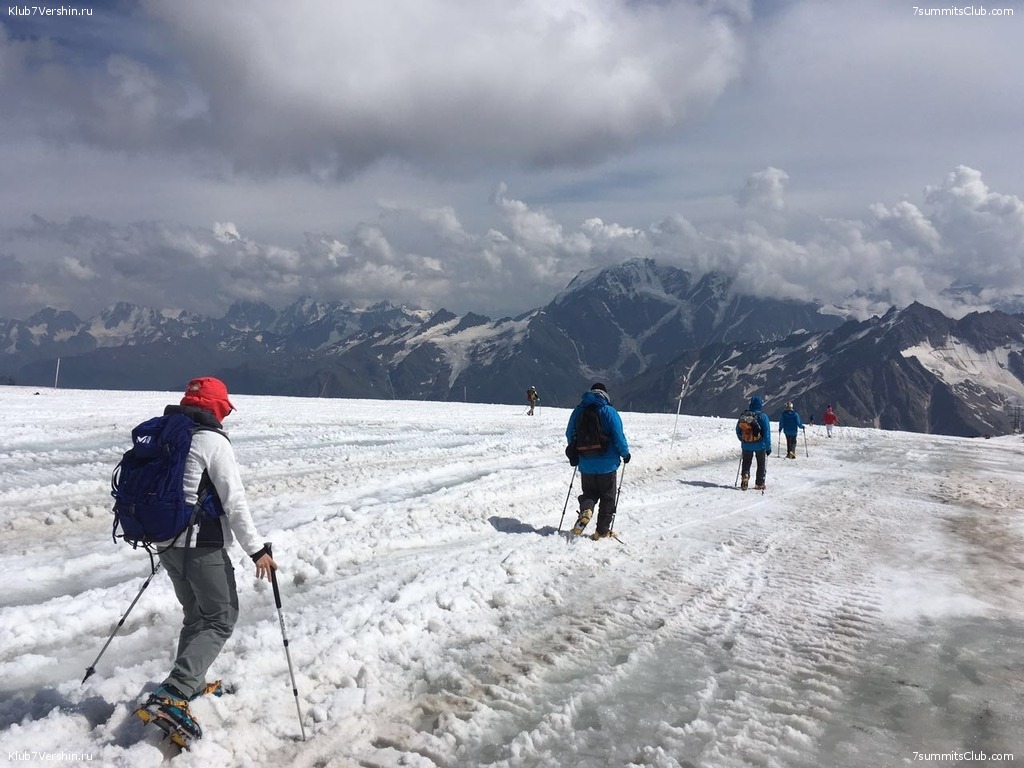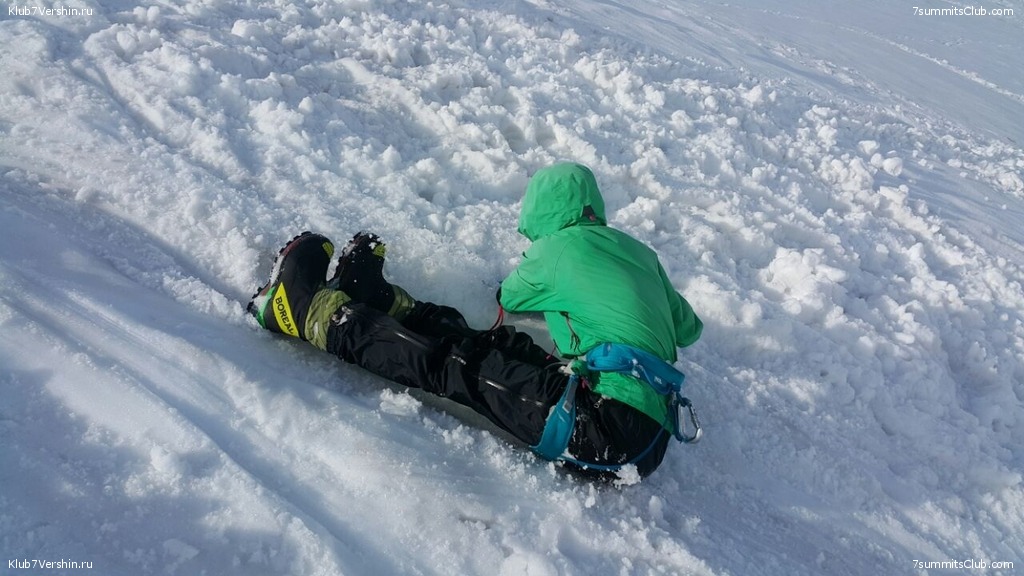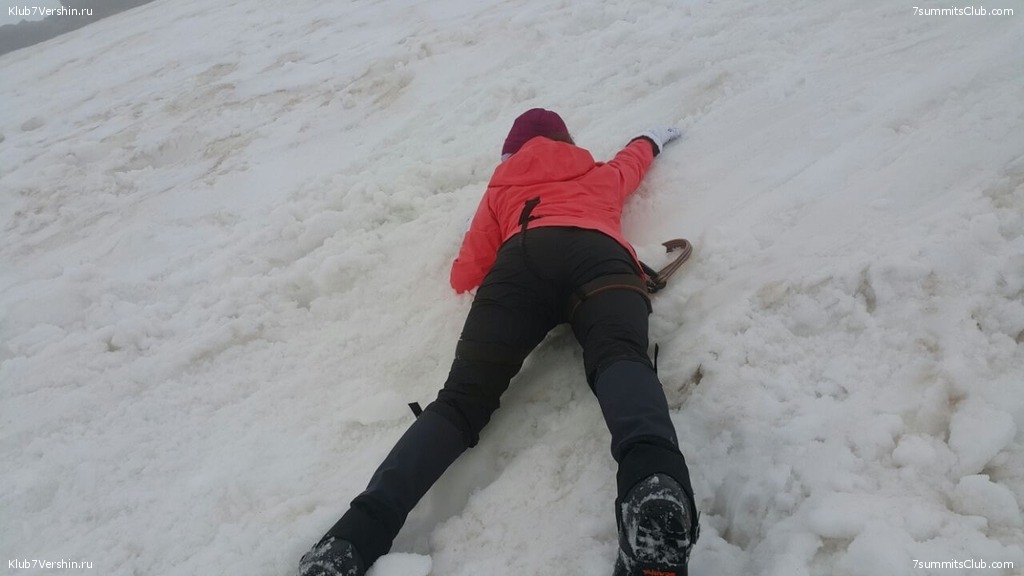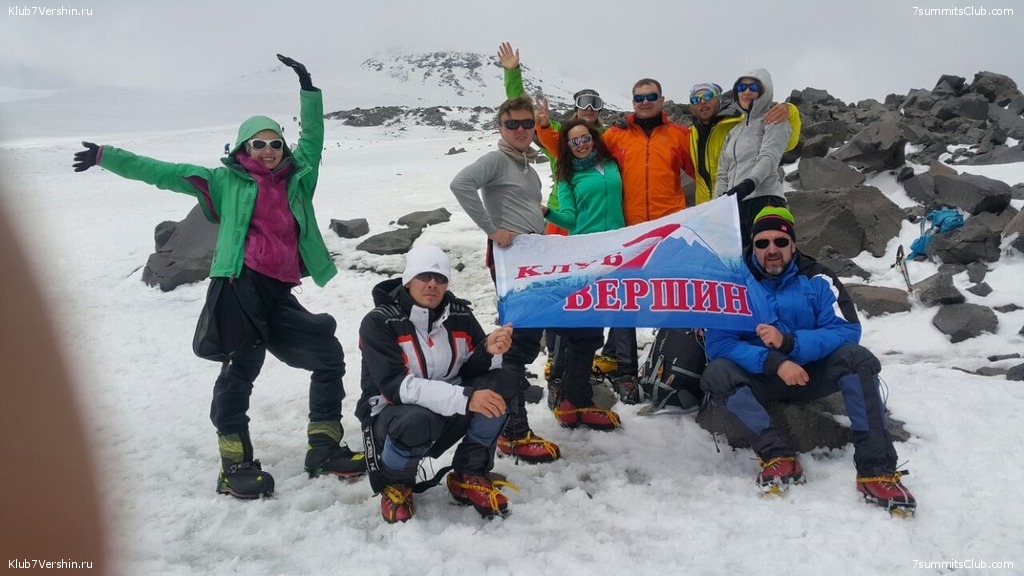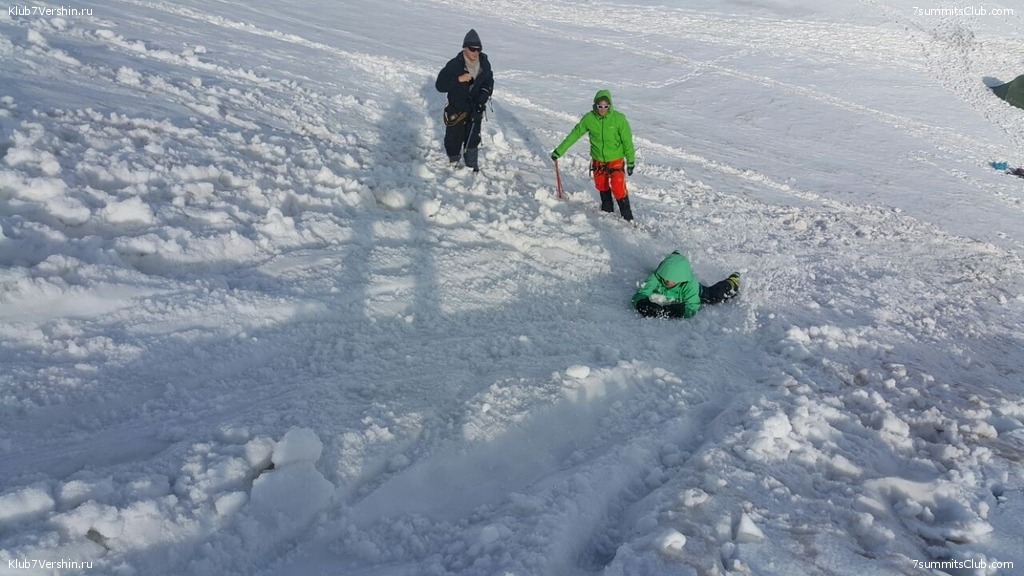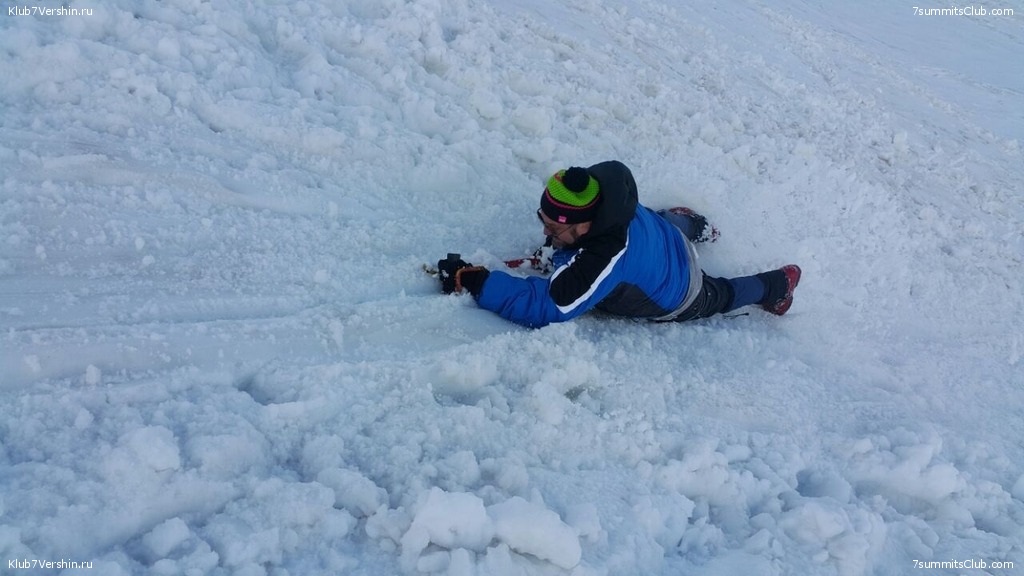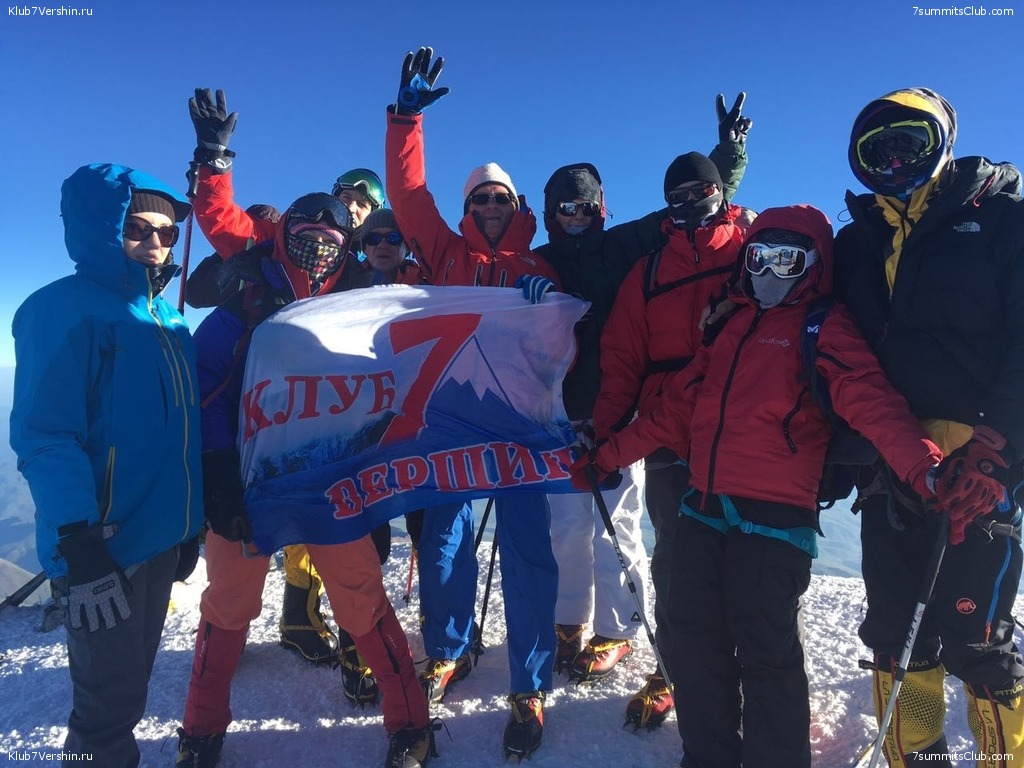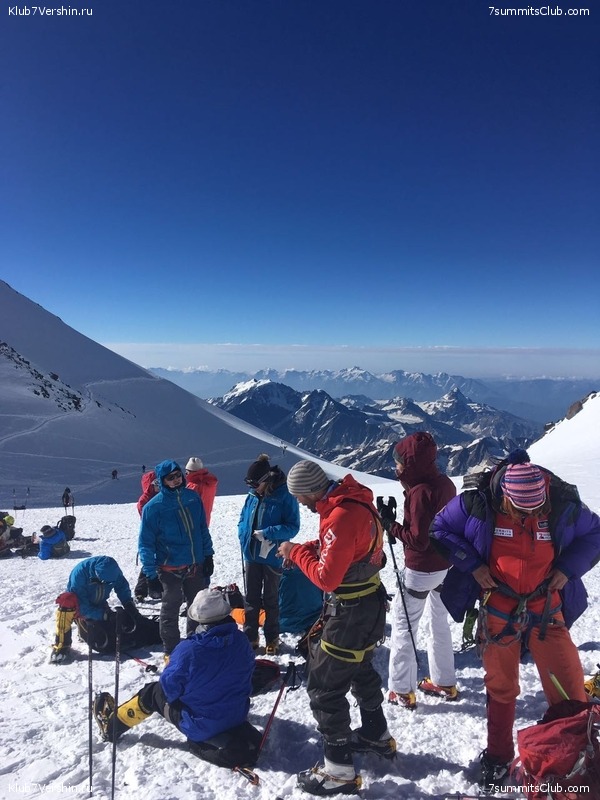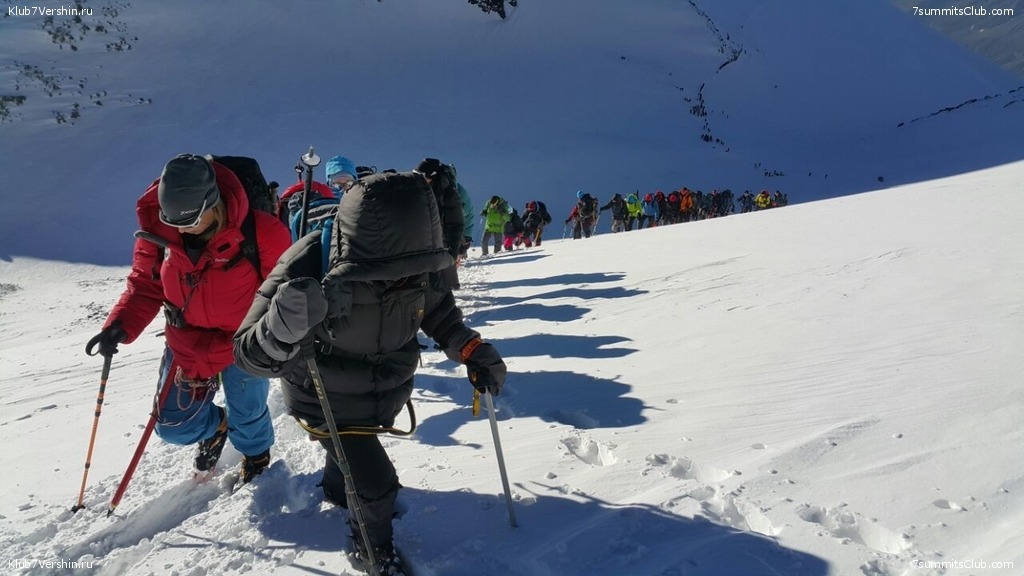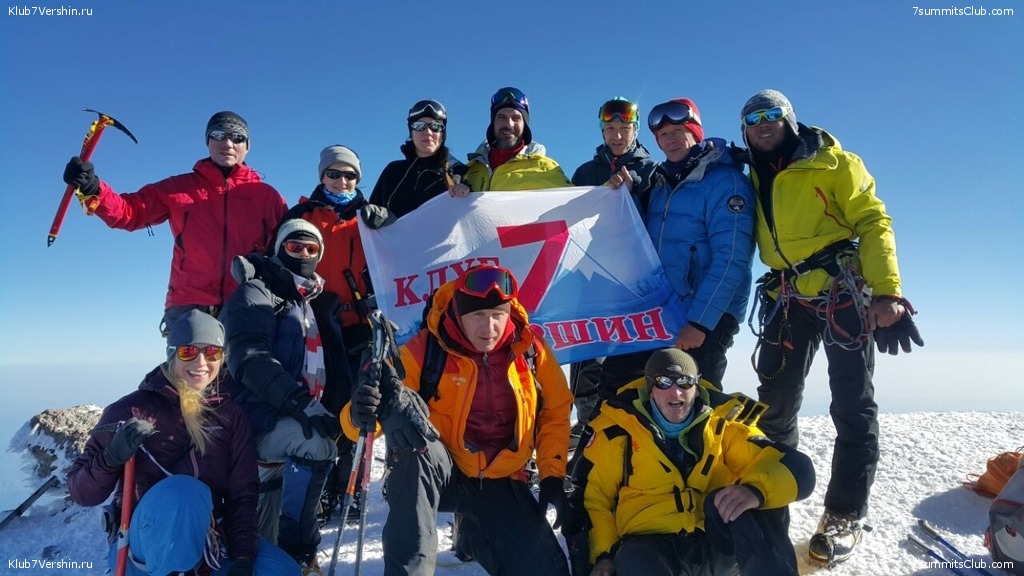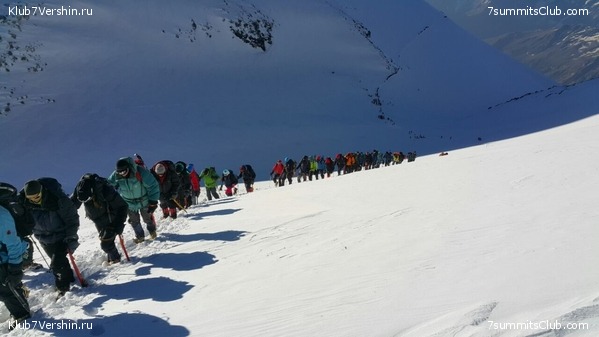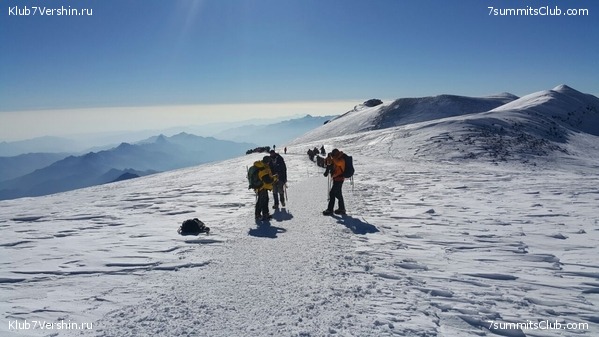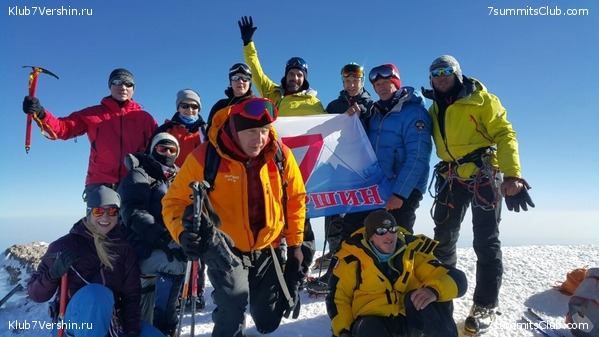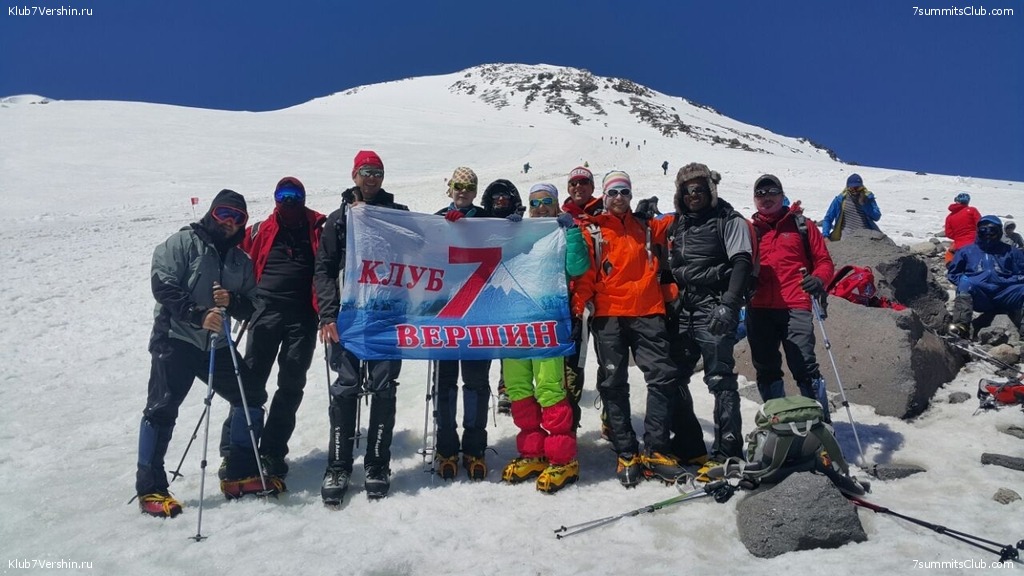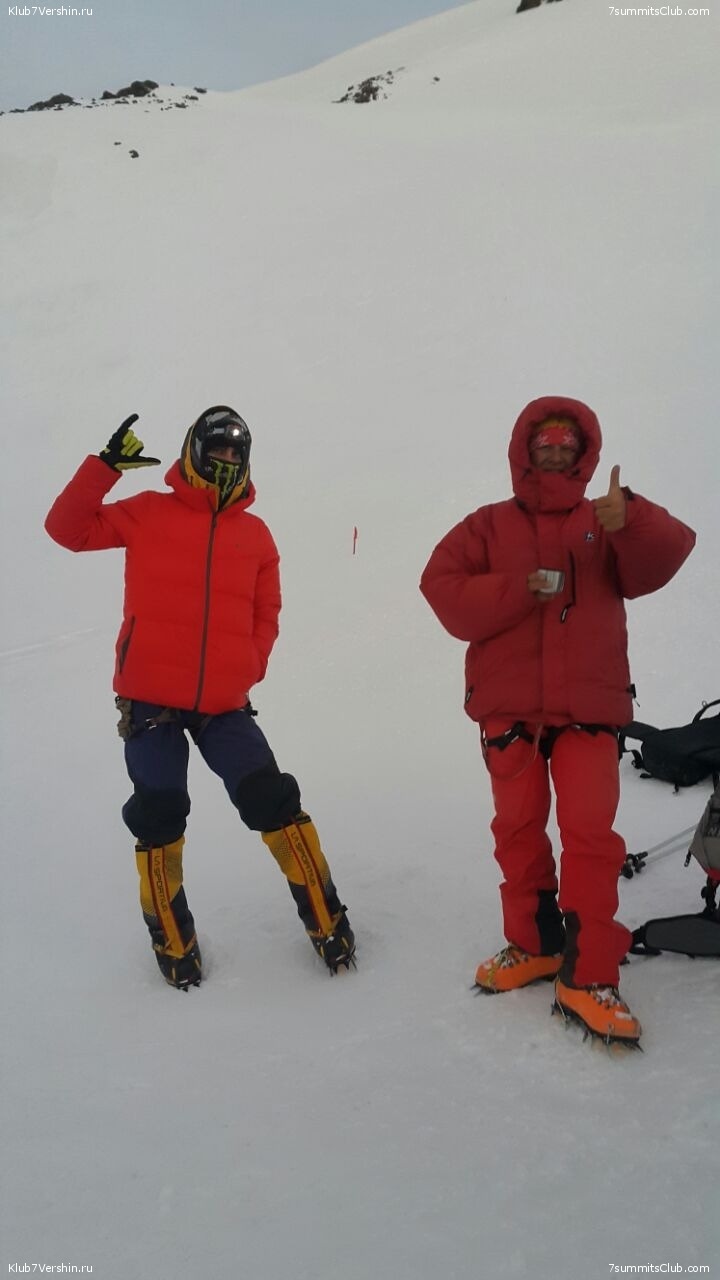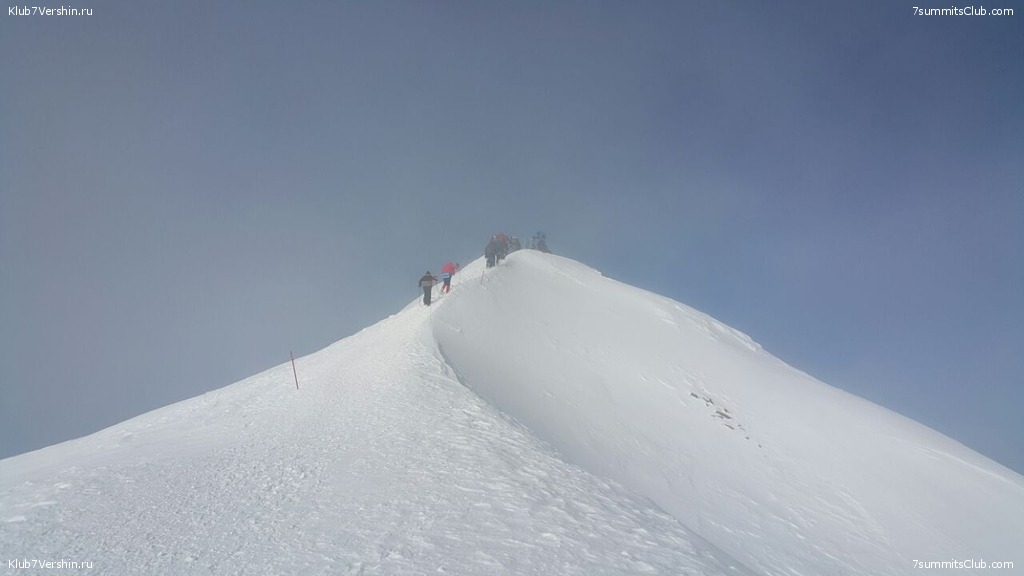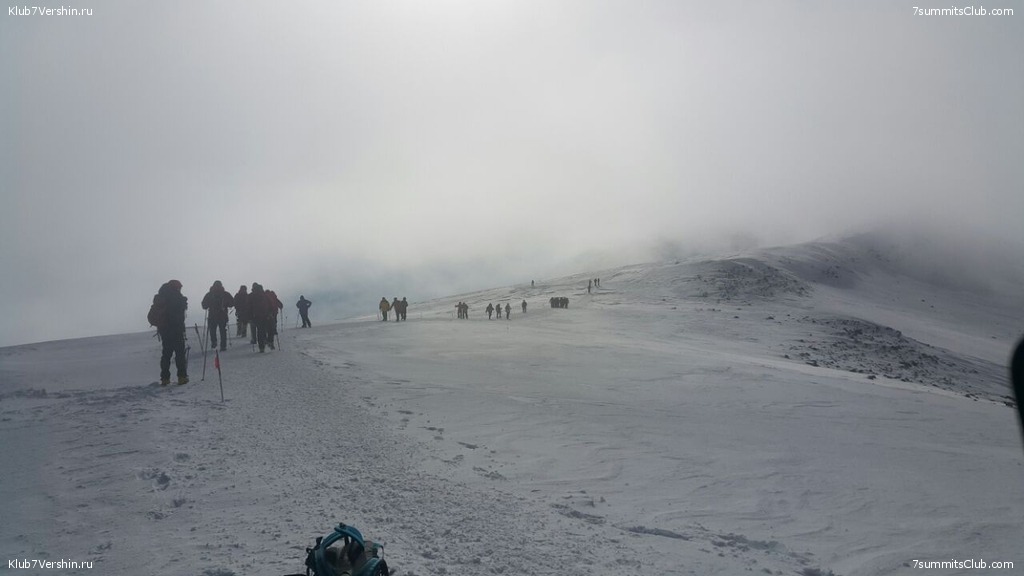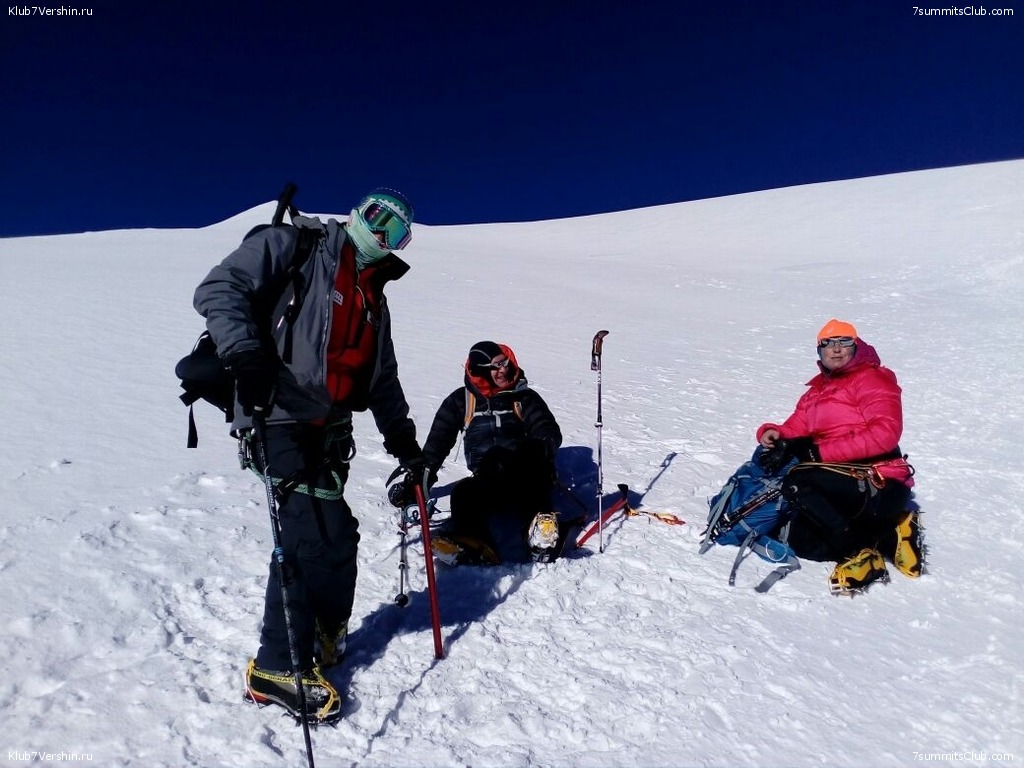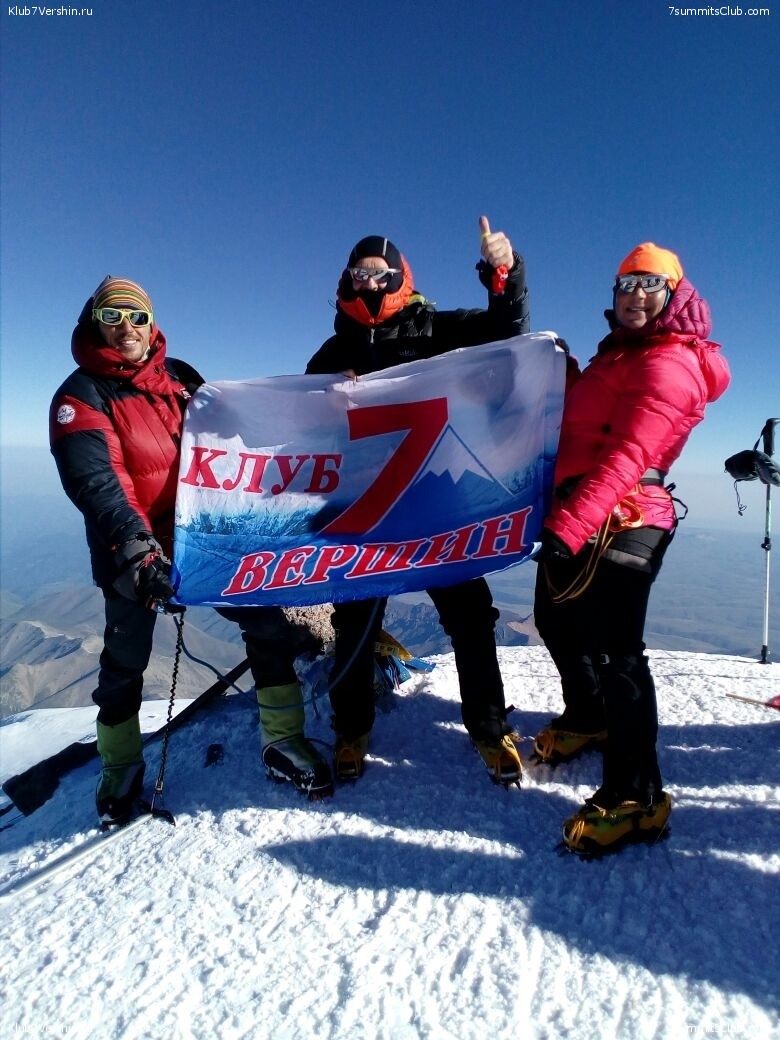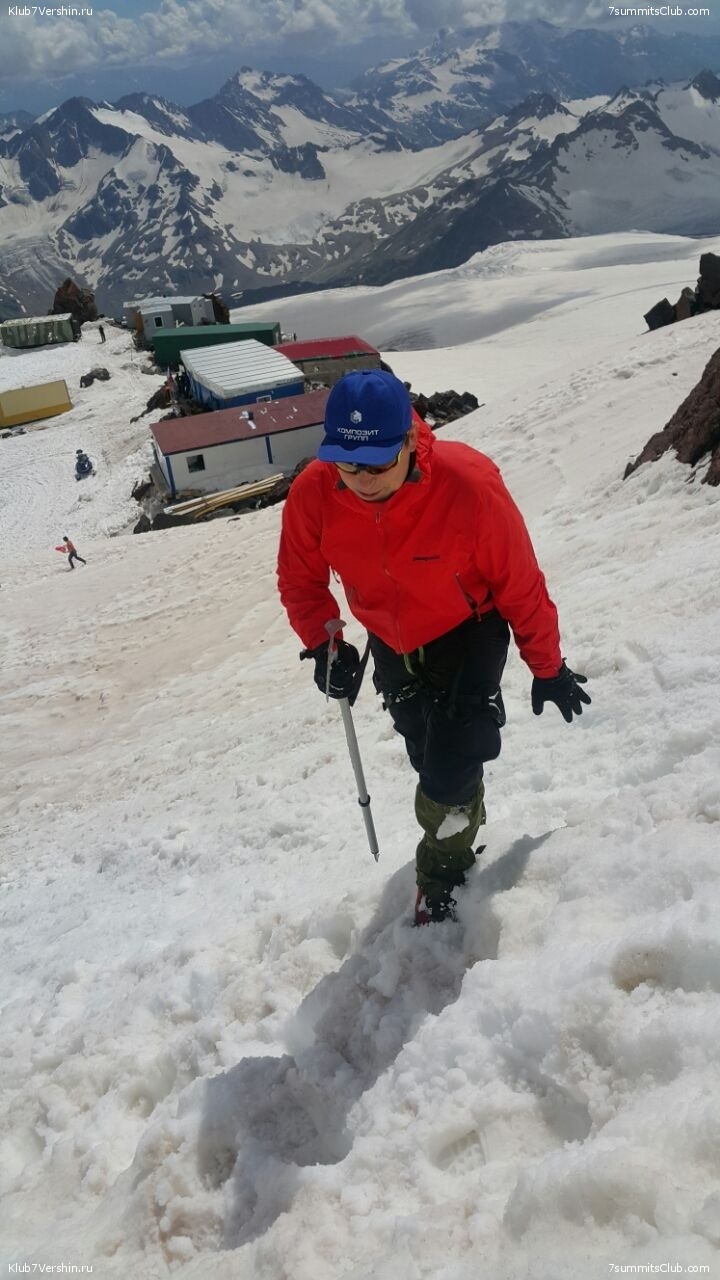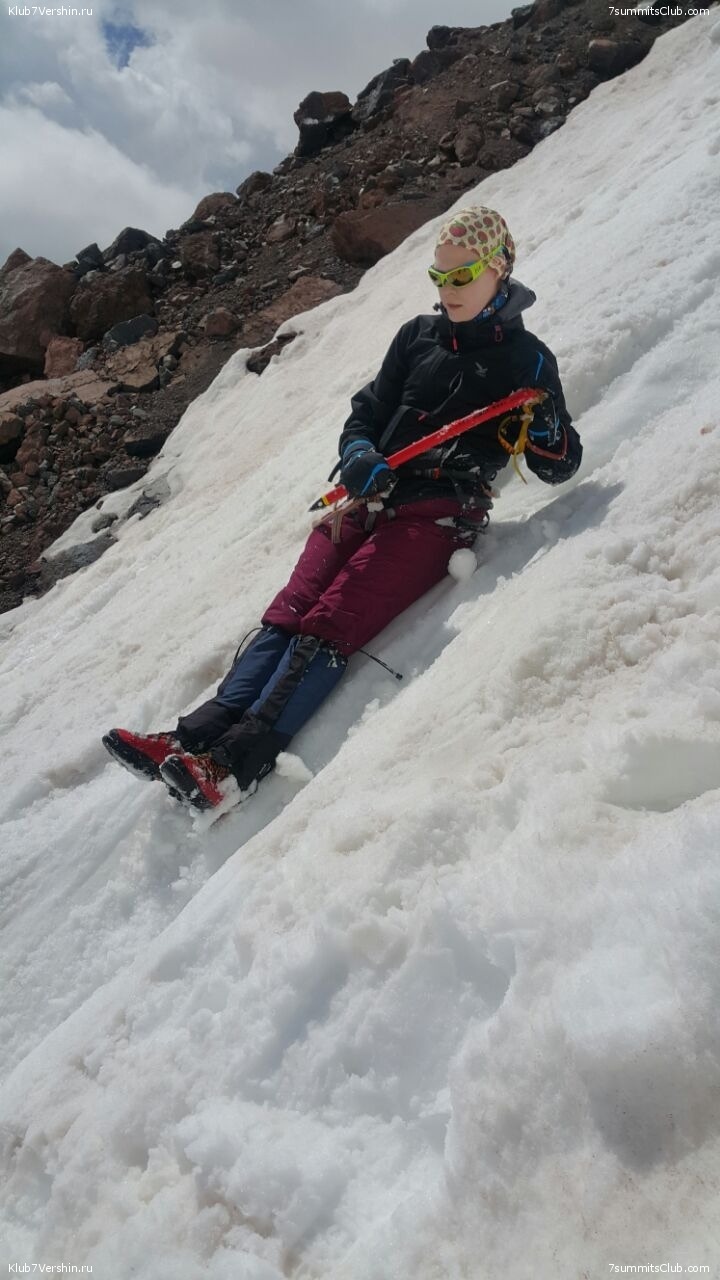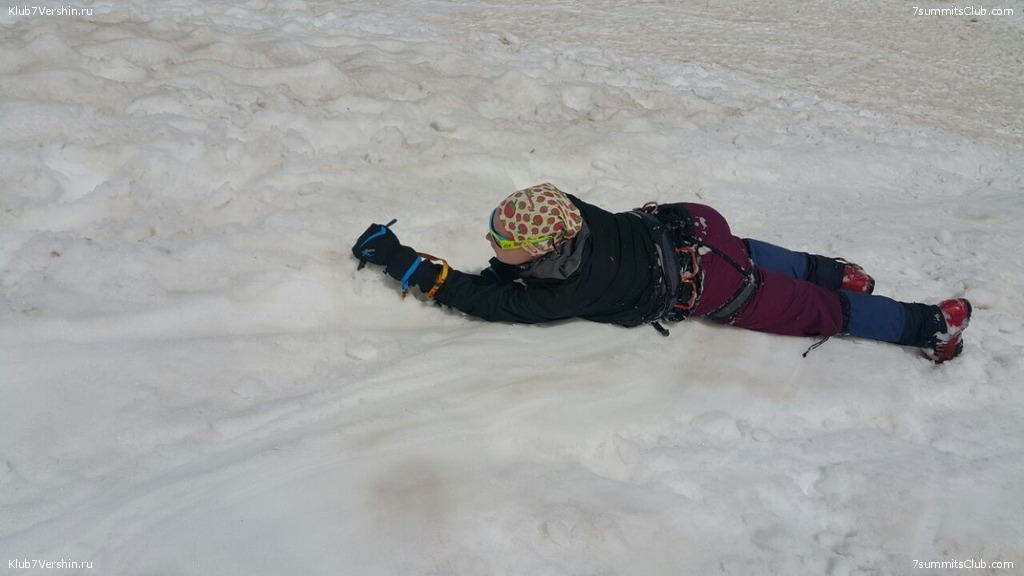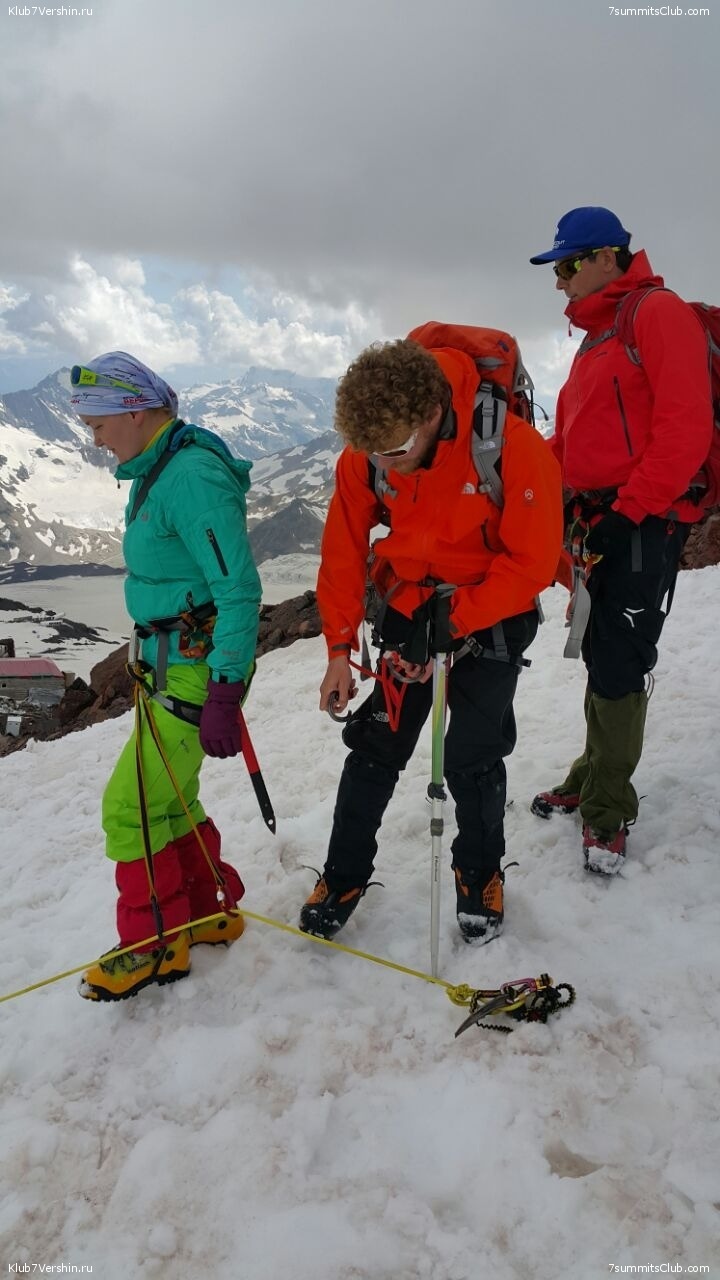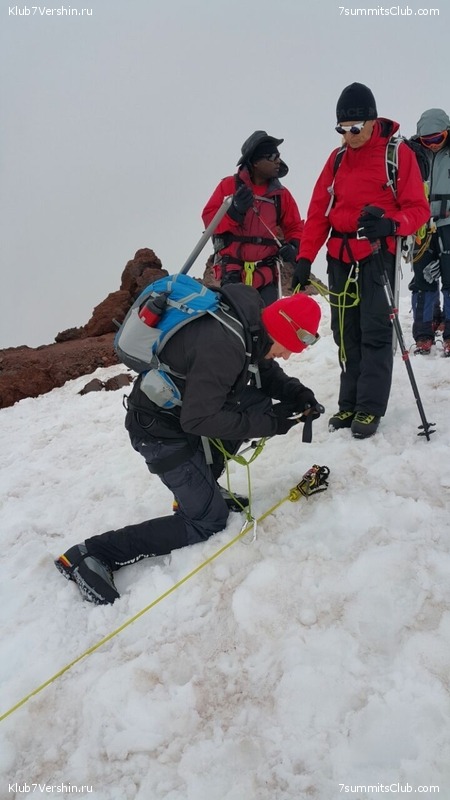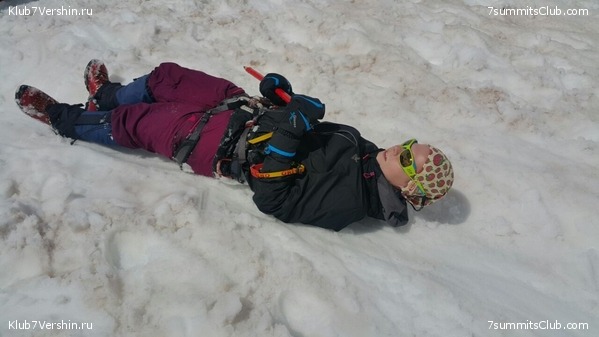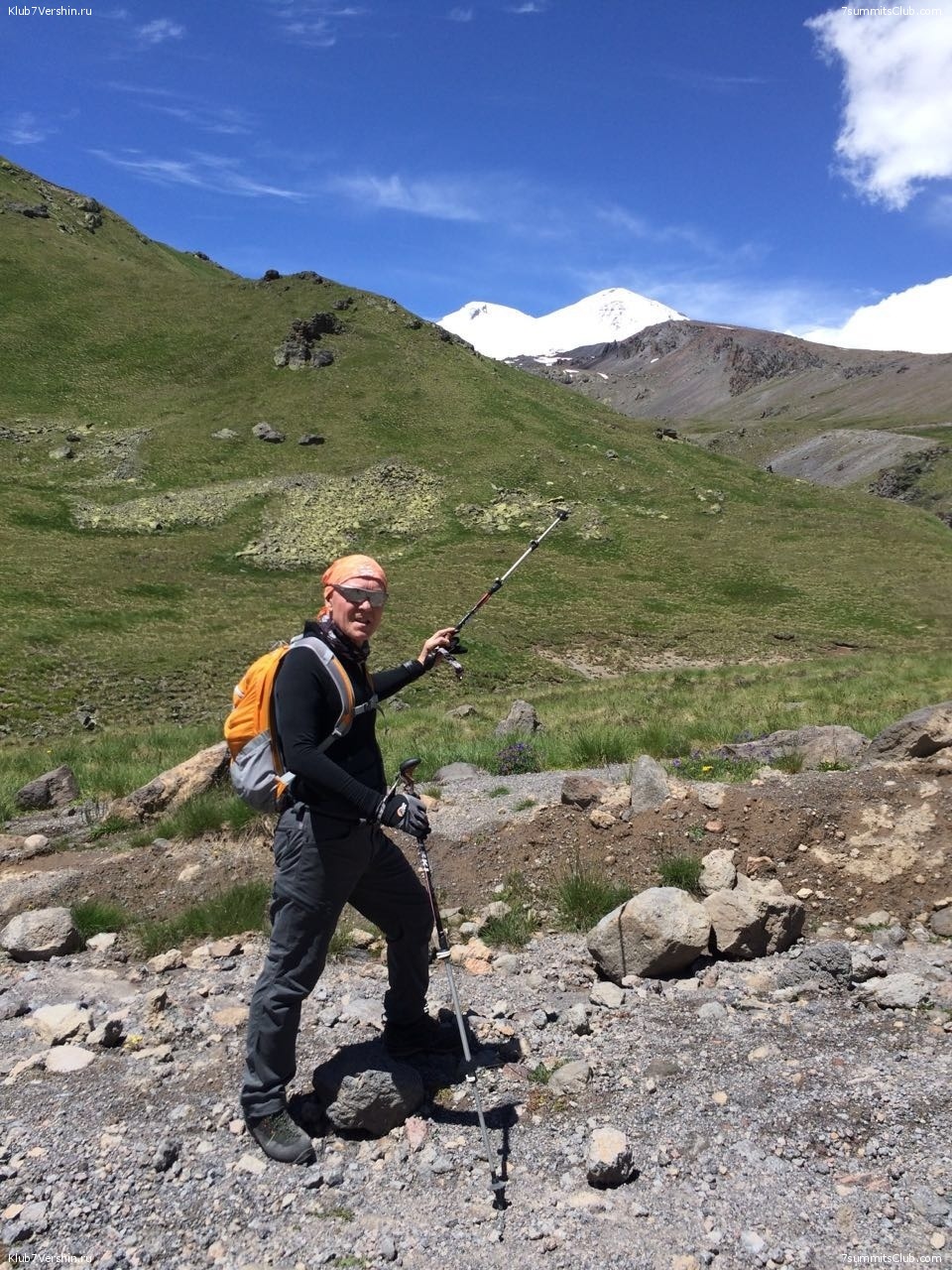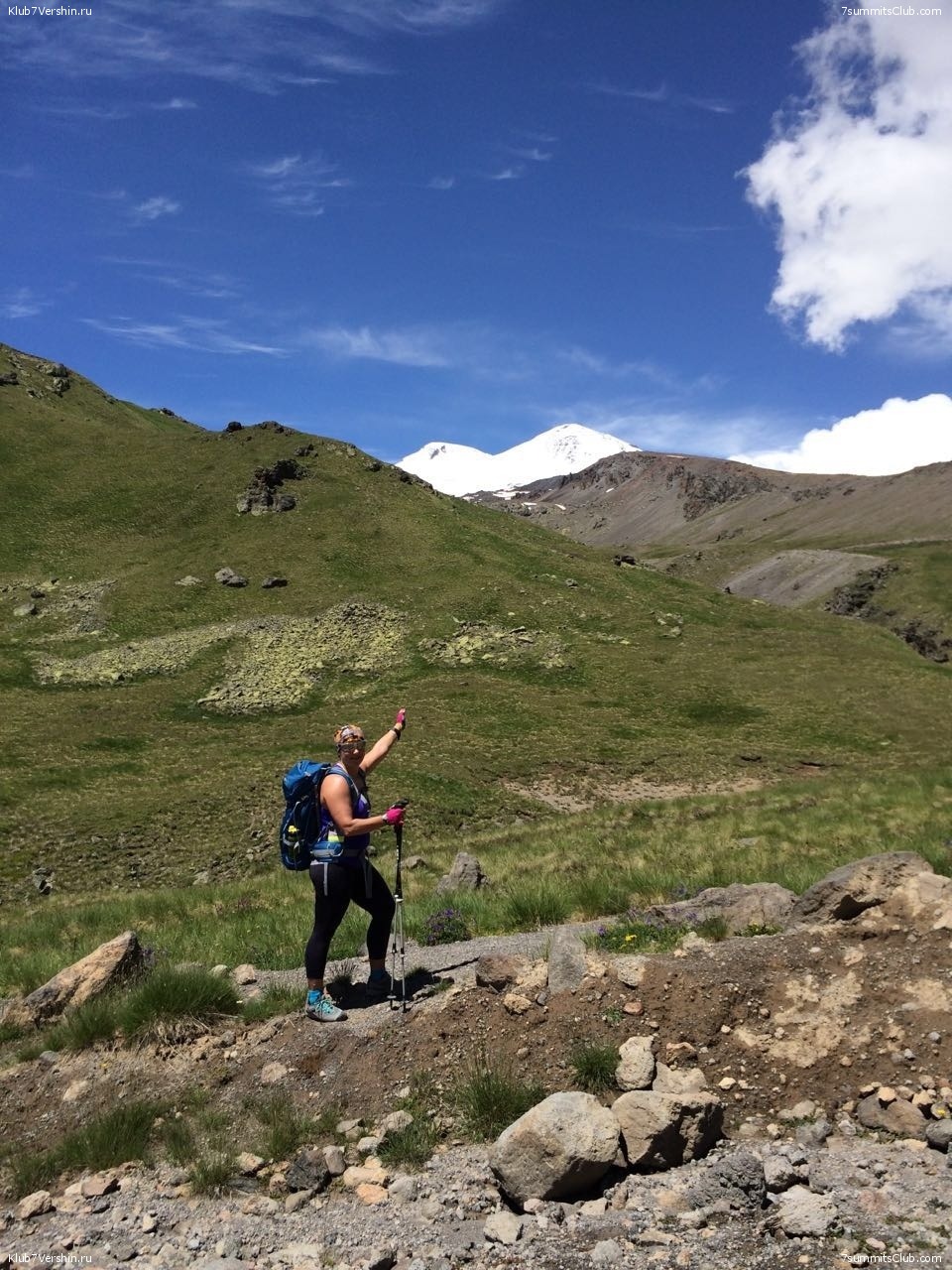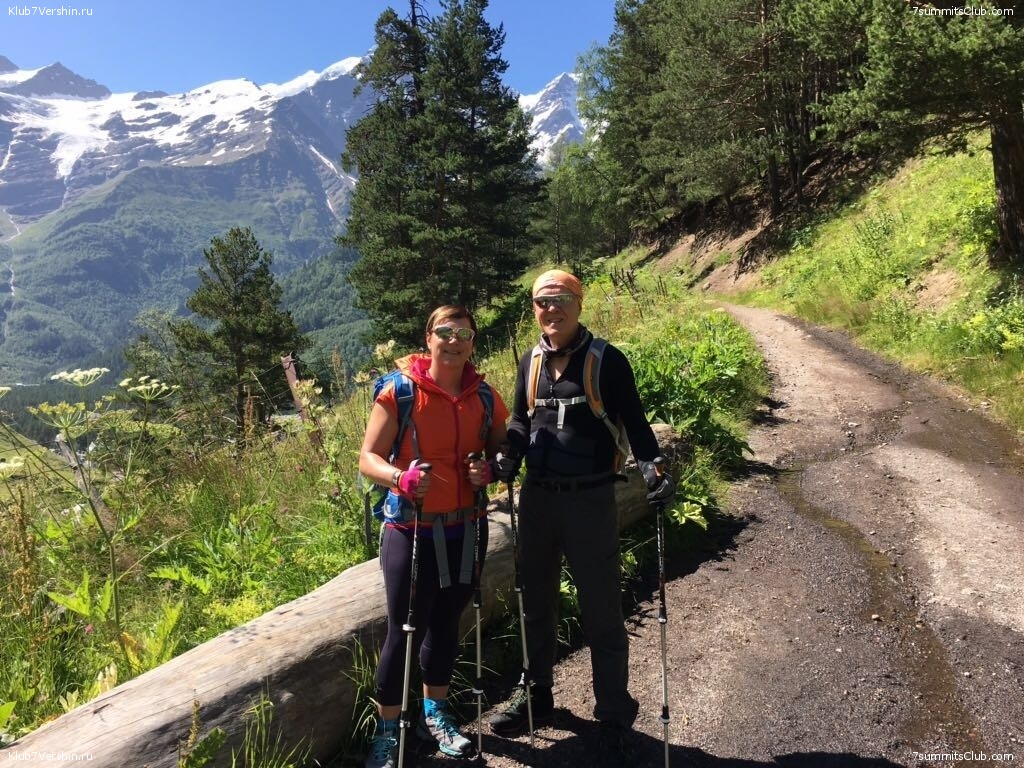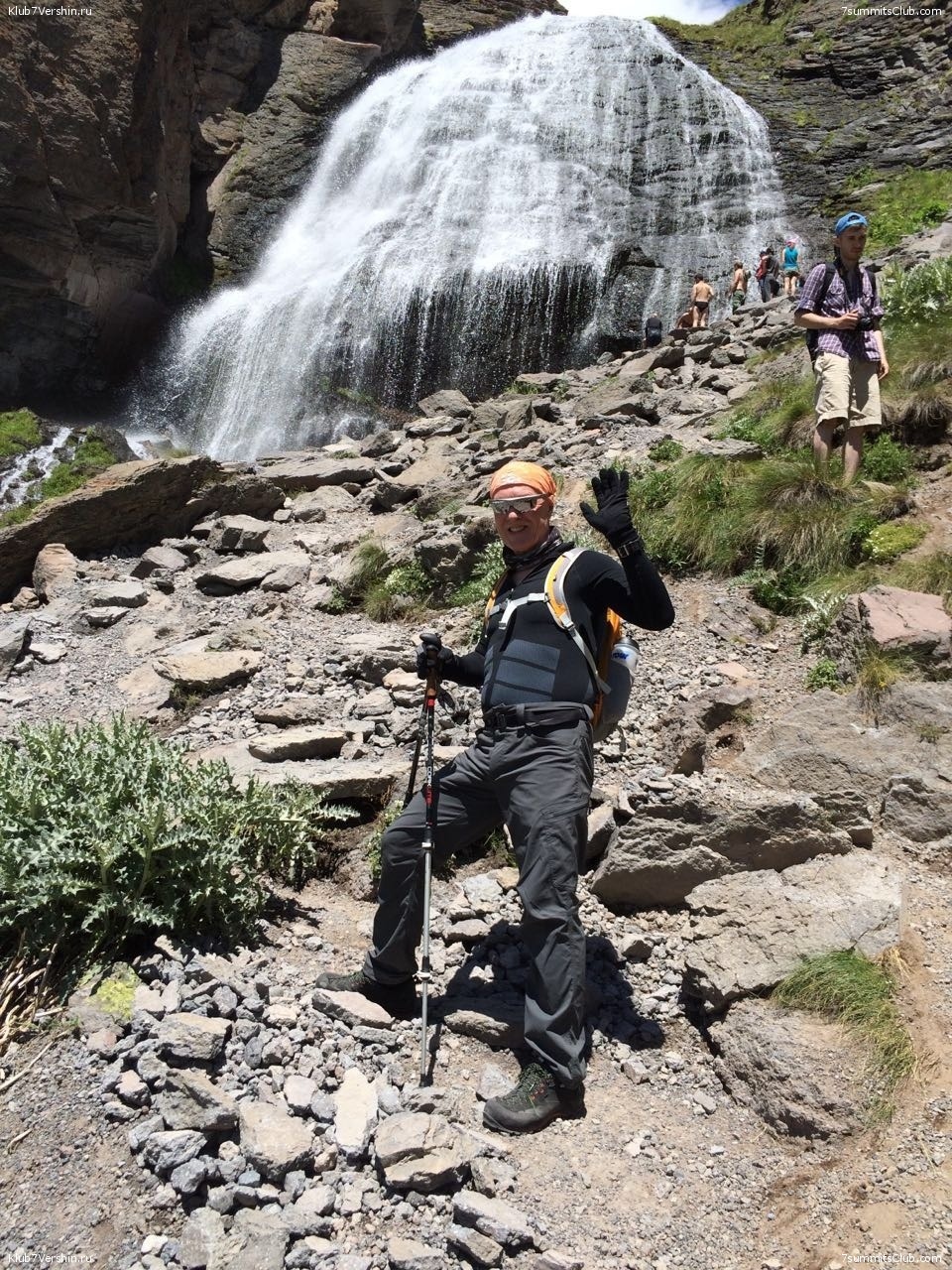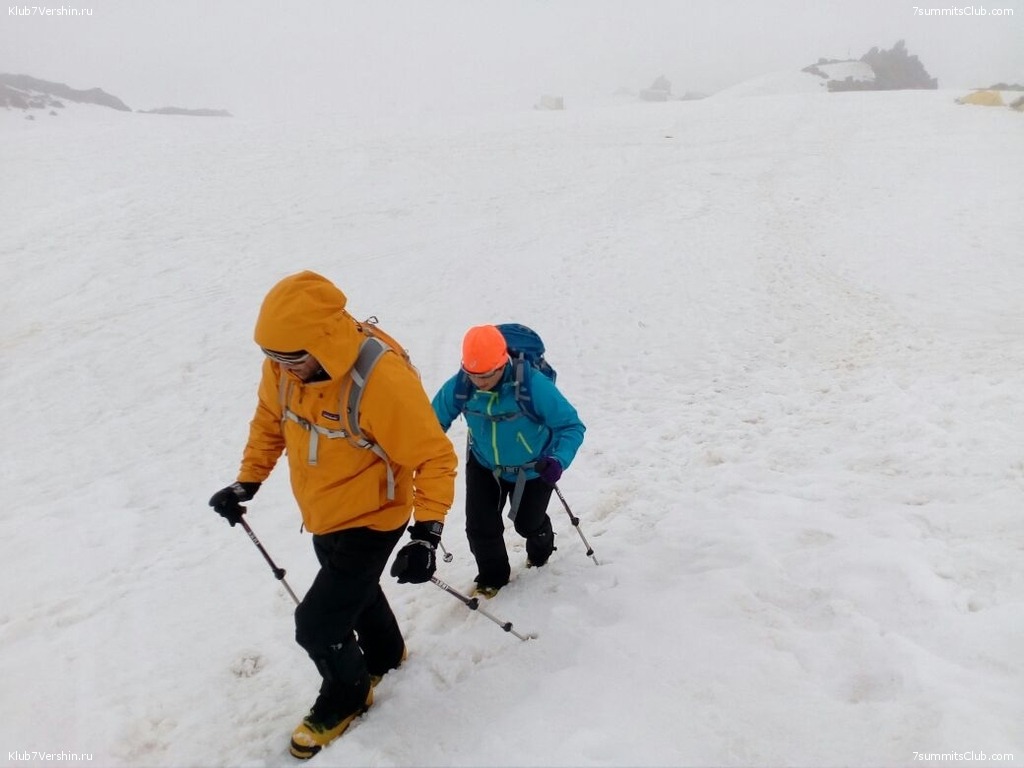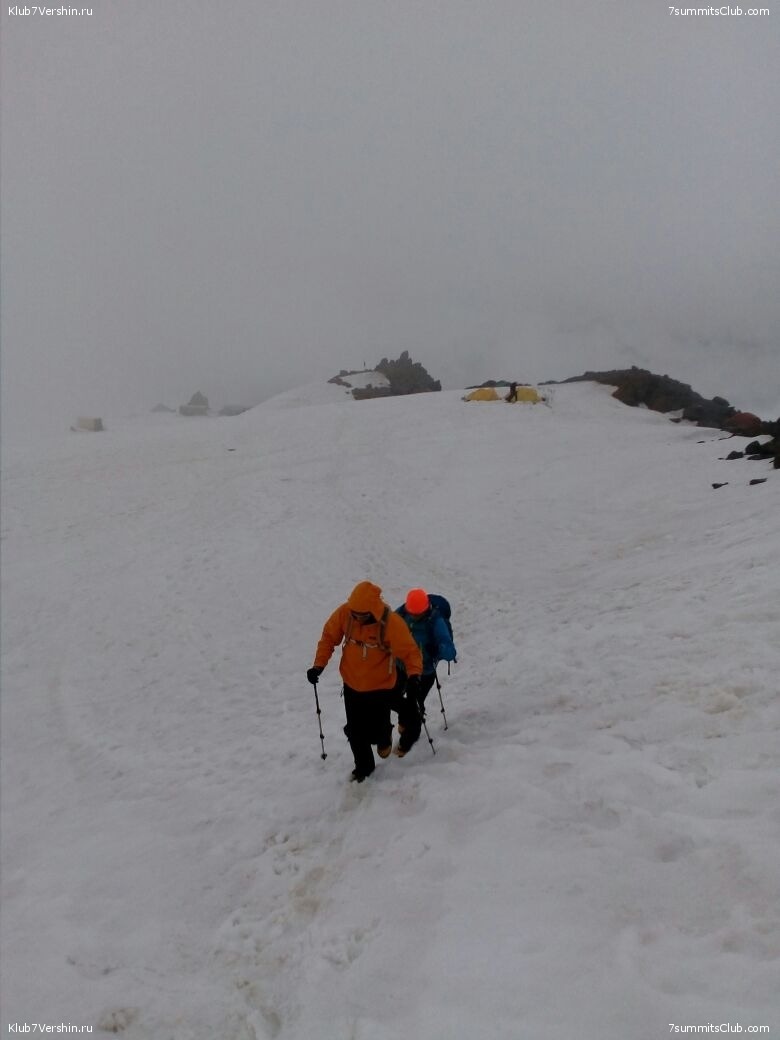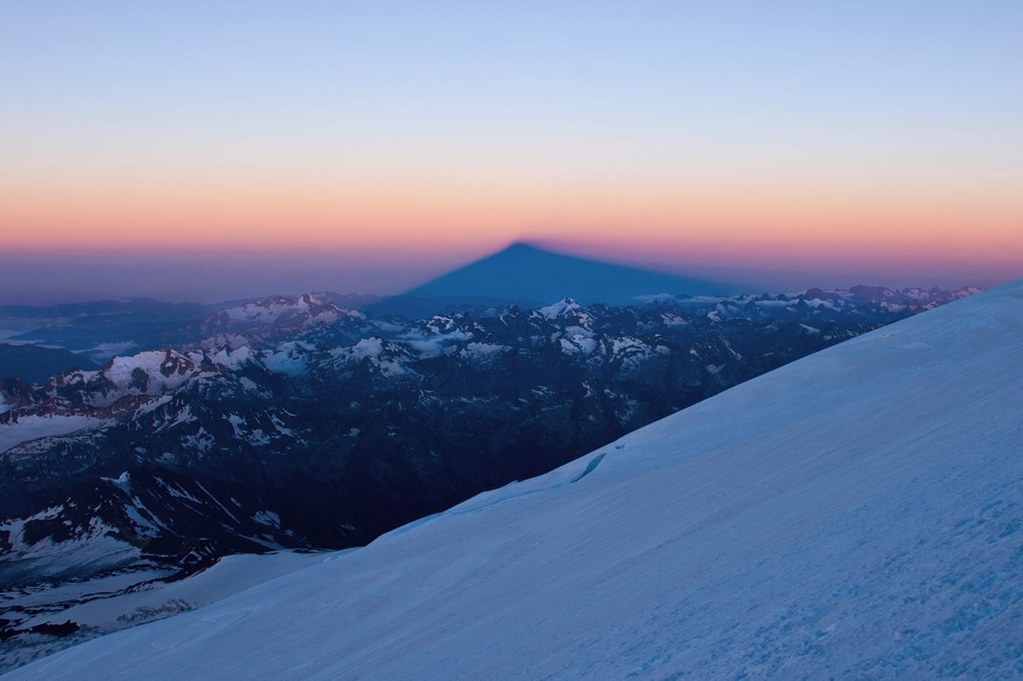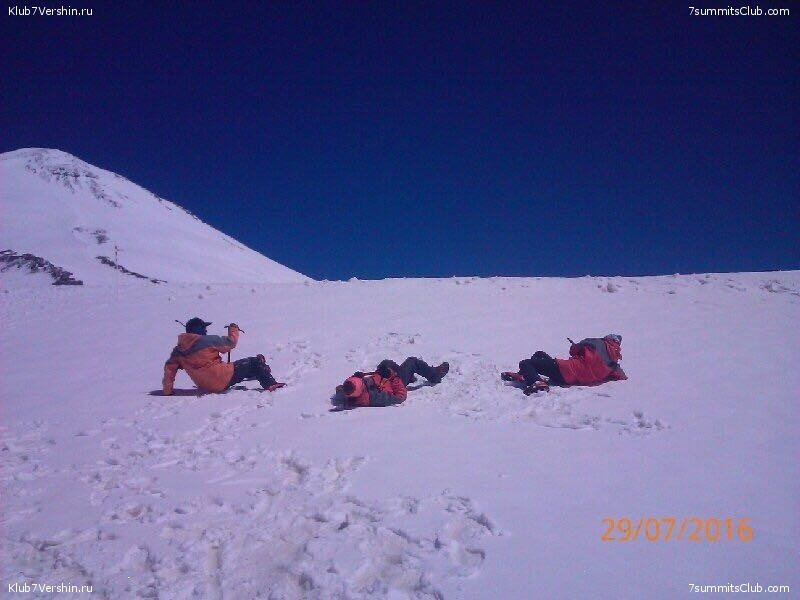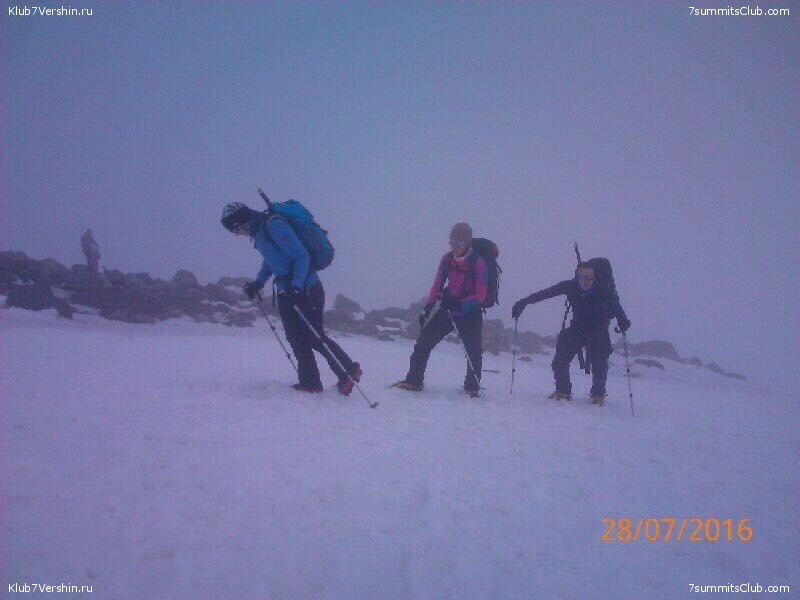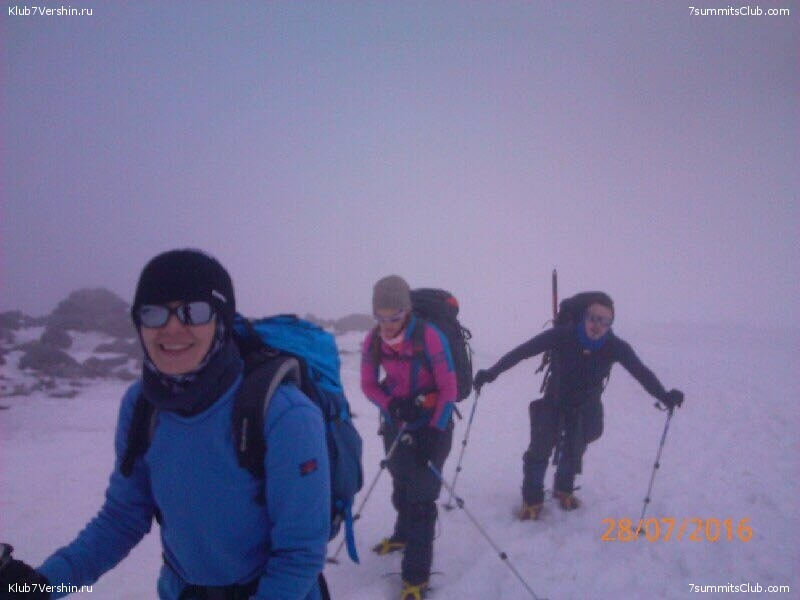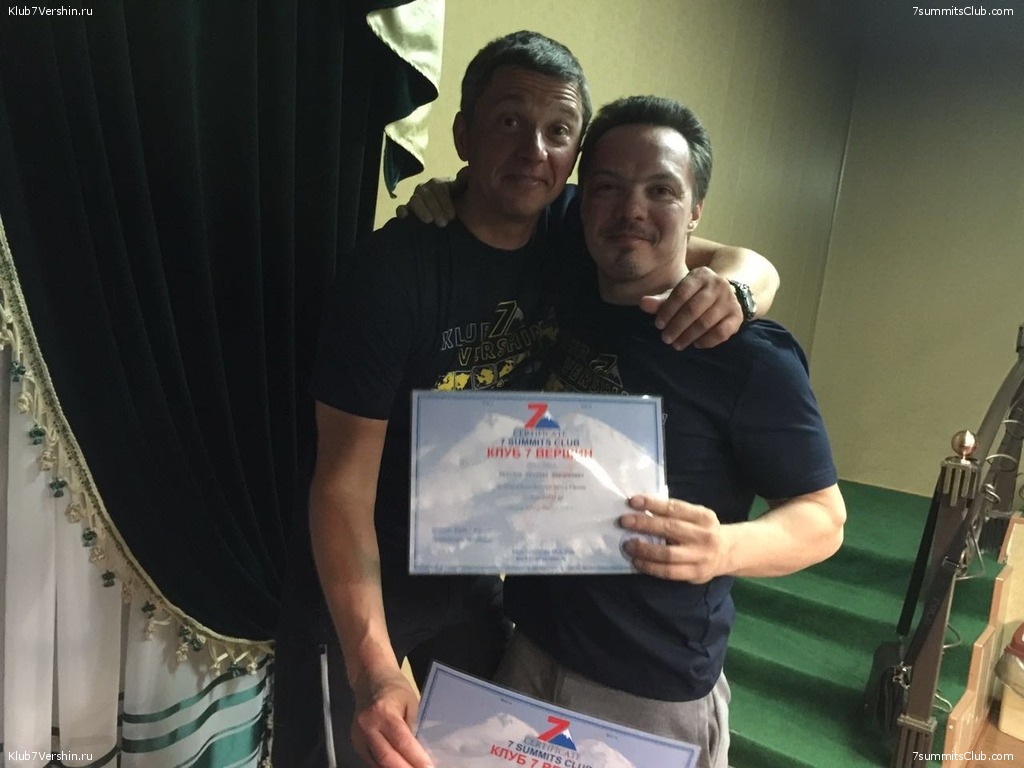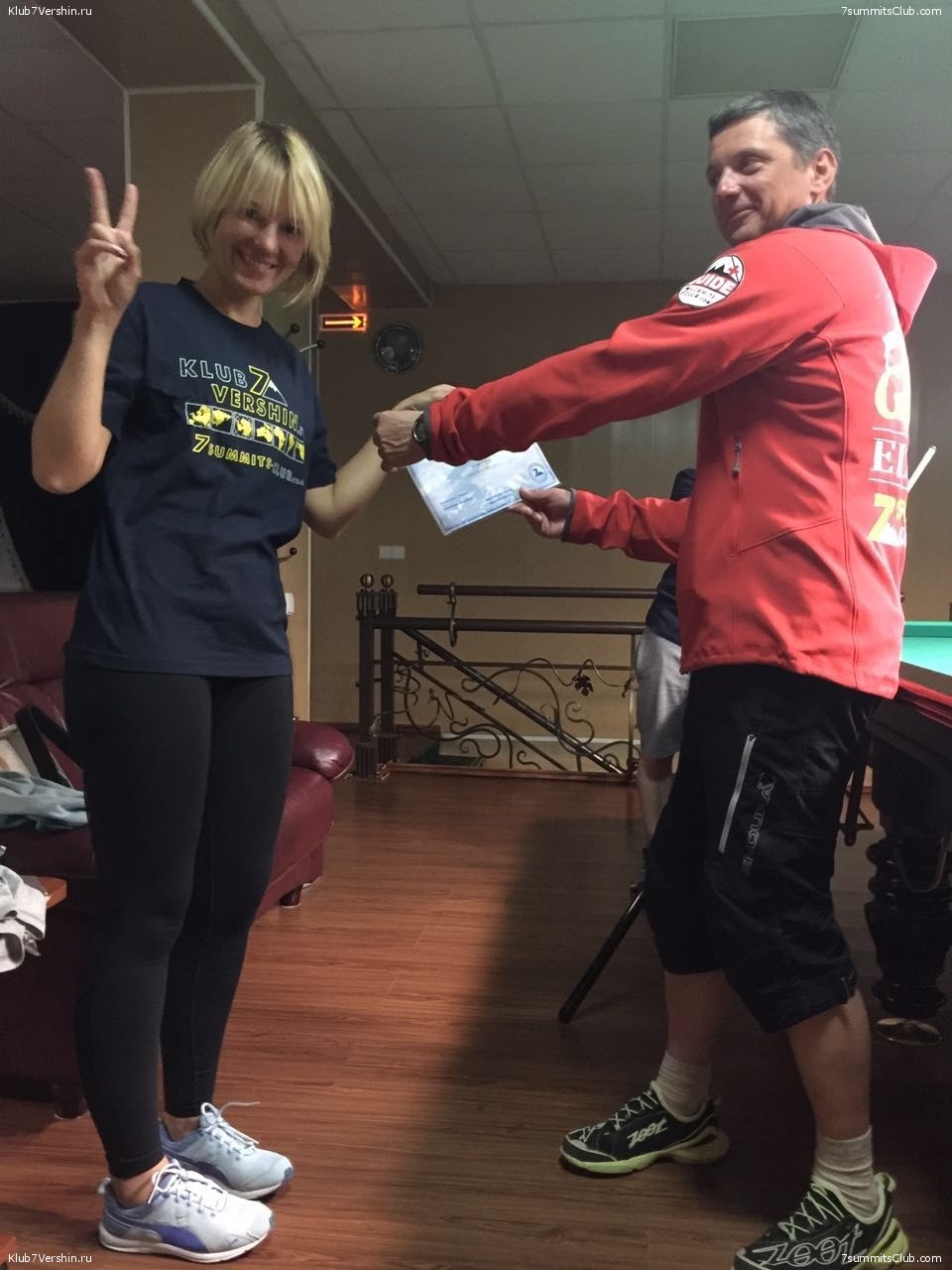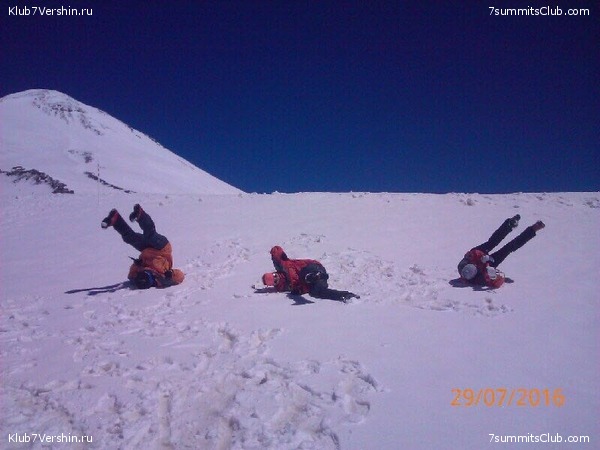"7 Summits + 2 Poles" project news - Page 125
Summit! Ben Cranwell and Heleen Laurisson climbed Kilimanjaro
Kilimanjaro.
Ben Cranwell and Heleen Laurisson stood on top of Mount Kilimanjaro on 13 September. They climbed to the top together, accompanied by the local team. Now they are still in Tanzania, ready to fly home. Already, Ben and Helen ...
Ben Cranwell and Heleen Laurisson stood on top of Mount Kilimanjaro on 13 September. They climbed to the top together, accompanied by the local team.
Now they are still in Tanzania, ready to fly home. Already, Ben and Helen make plans for the following ascents.
The list of achievements they have already 2 of the 7 highest peaks of the continents, five ahead yet!
Our congratulations!
SUMMIT! September 11th a girl group of Sergei Semykin climbed Elbrus
Elbrus.
Sergey Semykin: September 11th members, courageous girls, from a group of Sergei Semykin climbed Elbrus. Many thanks to Pavel who was the second guide!
Sergey Semykin: September 11th members, courageous girls, from a group of Sergei Semykin climbed Elbrus.
Many thanks to Pavel who was the second guide!
SUMMIT! Group guided by Andrey Berezin conquered Mount Elbrus
Elbrus.
Group of Andrey Berezin named "Seven climbers and a Girl" made a successful ascent to the highest peak of Russia Mount Elbrus. Everything went well, they were lucky with the weather too. Photos turned out great. Our congratulations! ...
Group of Andrey Berezin named "Seven climbers and a Girl" made a successful ascent to the highest peak of Russia Mount Elbrus. Everything went well, they were lucky with the weather too. Photos turned out great. Our congratulations!
Summit! Chinese group with our guide Sergey Avtomonov climbed to the top of Mount Elbrus
Elbrus.
It is Avtomonov Sergei. Today I and a group from China went up to the Western peak of Elbrus. The ascent took place in ideal weather conditions. Great, very warm, excellent visibility. We have made more than one hundred photographs. Our ...
It is Avtomonov Sergei. Today I and a group from China went up to the Western peak of Elbrus. The ascent took place in ideal weather conditions. Great, very warm, excellent visibility. We have made more than one hundred photographs. Our friends enjoyed it, all members of the group are satisfied, all reached the summit.
Now we all down to the hotel and rest, getting ready to leave ... .. That is all!
SUMMIT! Andrey Berezin and an Australian named Kostya climbed Mount Elbrus
Elbrus.
Andrey Berezin: I and Kostya, we climbed Mount Elbrus, Western Peak. Kostya – Ironman, he need not moch time for acclimatization. The weather was nasty … Also some fumaroles opened, we inhale vapors of sulfur, all the ...
Andrey Berezin: I and Kostya, we climbed Mount Elbrus, Western Peak. Kostya – Ironman, he need not moch time for acclimatization. The weather was nasty … Also some fumaroles opened, we inhale vapors of sulfur, all the time we wanted to sleep. At the top the wind was about 60 kilometers per hour. Therefore, the photo - just sitting!
The second member of the group (climber from the USA) continued get acclimation according to the program. He must climb the summit, with Andrey a few days later ...
At the end of the summer full group of Vladimir Kotlyar climbed Elbrus
Elbrus.
Hello, everyone! It says Vladimir Kotlyar with my closing the summer season group, Climb Elbrus program. The Group named SHKID Republic in full successfully climbed Mount Elbrus. Some participants even climbed two peaks. And without ...
Hello, everyone! It says Vladimir Kotlyar with my closing the summer season group, Climb Elbrus program. The Group named SHKID Republic in full successfully climbed Mount Elbrus. Some participants even climbed two peaks. And without the help of snowcat – it is Anna and Edgar. Thanks to them, and I also got to climb the two peaks. What I am very happy. And yet we dragged a watermelon on both summits and lowered it in Terskol. And today we will eat it together, as this watermelon charged with energy by as much as two peaks of Mount Elbrus
This is our finish of season. Cool! In general, everything was great....
VIDEO
SUMMIT! All Group is resting before summit assault, but the two climbers had already did it
Elbrus.
Hello! Here Vladimir Kotlyar and the group "Respublika SHKID". Yesterday we all went together to the Pastukhov Rocks. At night, two people: an American Tom Biksler and our Ecuadorian friend guide Edgar Parra made the ascent to the ...
Hello! Here Vladimir Kotlyar and the group "Respublika SHKID". Yesterday we all went together to the Pastukhov Rocks. At night, two people: an American Tom Biksler and our Ecuadorian friend guide Edgar Parra made the ascent to the Western Peak of Mount Elbrus. This was possible because they come to us already acclimatized, after a few climbs in Peru. Today we have a day of rest, we rest, roast barbecue, enjoy life ...
Alex Abramov and Mingma Gelu came to the Caucasus
Elbrus.
The 7 Summits Club President Alexander Abramov President and CEO Seven Summits Adventures (Nepal) Mingma Gelu arrived in Terskol on an official working visit. In the first days there were numerous friendly meetings and a walk to ...
The 7 Summits Club President Alexander Abramov President and CEO Seven Summits Adventures (Nepal) Mingma Gelu arrived in Terskol on an official working visit. In the first days there were numerous friendly meetings and a walk to the waterfall “Girlish braid”...
Summit! Group of Andrey Berezin conquered Mount Elbrus
Elbrus.
Hello! Here is a guide of the Seven Summits Club Andrey Berezin. Today our group climbed to the top of Mount Elbrus. The weather was beautiful, as pilots say, "a million to a million." At the summit we were at 8 am. On this day, ...
Hello! Here is a guide of the Seven Summits Club Andrey Berezin. Today our group climbed to the top of Mount Elbrus. The weather was beautiful, as pilots say, "a million to a million." At the summit we were at 8 am. On this day, a huge number of people have been here. We can say it was a pandemonium. In order to get to the top, it was necessary to stand in line. To make a photo...
Now our team went down, all cheerful and happy ...
Best regards! Andrey Berezin.
Distinguished guests at our office: Ecuadorian guide Edgar Parra and his protege Tom Biñksler from US
Elbrus.
Our partner in Ecuador, the famous local guide Edgar Parra, who is also founder and director of his own company, brought to office a very interesting person. This is his client, his client from the United States, from California. His name ...
Our partner in Ecuador, the famous local guide Edgar Parra, who is also founder and director of his own company, brought to office a very interesting person. This is his client, his client from the United States, from California. His name is Tom Biñksler. 42-year-old American is living with a diagnosis of diabetes type 2 and besides suffered a serious operation for Crohn's disease.
Formally, he is twice the invalid. He is not just a living, he had come to climb Mount Elbrus. The highest peak of Europe should be a third of his planned collection "Seven summis". Tom is going to become the first diabetic to complete this program. While in his collection there are Kilimanjaro - 2012, and Aconcagua - 2013. Trying to climb Mount McKinley in 2015, ended in failure due to prolonged bad weather:
Tom Bixler at McKinley. 2015. Without top.
In Moscow
Vladimir Kotlyar and Ignatiev family: we climbed the Eastern peak of Elbrus!
Elbrus.
Hello, everyone! It is Vladimir Kotlyar, climbing Elbrus program. Today we climbed to the top of the Eastern Elbrus, with the couple of Ignatievs. The weather was great, everything was great. There was a light frost. We did not took ...
Hello, everyone! It is Vladimir Kotlyar, climbing Elbrus program. Today we climbed to the top of the Eastern Elbrus, with the couple of Ignatievs. The weather was great, everything was great. There was a light frost. We did not took off our warm down jackets until turned back down from the summit. But on the whole it was a clear sunny day, though frosty. In general, it was fun and great. Finally I went to the East summit, only the second time this season.
All, Adios! Today we will have an awarding certificates ceremony and a festive dinner.
Vladimir Kotlyar and family Ignatiev: acclimatization to Pastukhov's Rocks
Elbrus.
Hello, everyone! Here Vladimir Kotlyar, climbing Elbrus. I am here with a couple of Ignatievs. We made two acclimatization outings: on the Pastukhov Rocks and up to an altitude of five thousand. Now we are down to Terskol, ...
Hello, everyone! Here Vladimir Kotlyar, climbing Elbrus. I am here with a couple of Ignatievs. We made two acclimatization outings: on the Pastukhov Rocks and up to an altitude of five thousand. Now we are down to Terskol, to rest and wait for a weather window. Here we are sitting, waiting, looking up at the sky, we read tea leaves. Tomorrow we will climb up, I guess. That is all. Bye!
Group of Andrey Berezin: our acclimatization continues on Elbrus
Elbrus.
Hello! It is Andrey Berezin, a guide of the Seven Summits Club, reports from Elbrus. Yesterday, our group got to the shelter Leaprus. We immediately went to the snow-classes, worked self-arresting, using an ice ax. Then we went up a ...
Hello! It is Andrey Berezin, a guide of the Seven Summits Club, reports from Elbrus. Yesterday, our group got to the shelter Leaprus. We immediately went to the snow-classes, worked self-arresting, using an ice ax. Then we went up a steep slope, traverse slopes - practiced working with a rope. Today we went to the Pastukhov Rocks. Weather was good. Now we went down. Bye! Andrey Berezin, Seven Summits.
Summit !!! Abu Zhurtabaev and a group of company Elektrokomplekt climbed to the top of Elbrus
Elbrus.
A Guide of the 7 Summits Club Abu Zhurtabaev: a group from Kazakhstan – expedition of the company Elektrokomplekt, in honor of the 20th anniversary of the company. August 13th they successfully climbed (9 out of 11 ...
A Guide of the 7 Summits Club Abu Zhurtabaev: a group from Kazakhstan – expedition of the company Elektrokomplekt, in honor of the 20th anniversary of the company. August 13th they successfully climbed (9 out of 11 person) on the Westernsummit of Elbrus. The group is now going down ..
Summit! Group of Andrey Berezin climbed the summit of Elbrus
Elbrus.
Hello! This is a of guide Seven Summits on Elbrus Andrey Berezin. Today we climbed the summit. Our whole team has climbed to the western peak of Elbrus, 5642 meters. The weather was beautiful today. The previous days were thunderous. ...
Hello! This is a of guide Seven Summits on Elbrus Andrey Berezin. Today we climbed the summit. Our whole team has climbed to the western peak of Elbrus, 5642 meters. The weather was beautiful today. The previous days were thunderous. Today, on the slopes of Elbrus there was about 350 people. Record? That's what we calculated during the climb.
Summit! An international team climbed Mount Elbrus
Elbrus.
Hello! It speaks Andrey Berezin a guide of the Seven Summits Club. Today our group climbed to the top of Mount Elbrus. Ascent time: at 6:30 am we were on the top. A team of 9 people (3 persons from South Africa) and three guides ...
Hello! It speaks Andrey Berezin a guide of the Seven Summits Club. Today our group climbed to the top of Mount Elbrus. Ascent time: at 6:30 am we were on the top. A team of 9 people (3 persons from South Africa) and three guides reached the summit. The weather was surprisingly good, we caught the window, which was just for 3-4 hours. We went at this time. Now the whole group came down, it is now in the valley .... Terskol. We celebrate our success and we congratulate all the participants.
Summit! Vladimir Kotlyar with the group reached the top
Elbrus.
Hello everyone! There is a guide of the P.-Cult-Ura group Vladimir Kotlyar. Today we went to the top, the weather was excellent. All together went down later. And now we are in Terskol and will celebrate this thing ... ...
Hello everyone! There is a guide of the P.-Cult-Ura group Vladimir Kotlyar. Today we went to the top, the weather was excellent. All together went down later. And now we are in Terskol and will celebrate this thing ...
The international team of Andree Berezin is at the LeapRus refuge. Many photos
Elbrus.
Hello! Here is a guide of Seven Summits Andrei Berezin from Elbrus. Today our group climbed to the refuge. We went on a snowy training, climbed to 4200. It was sunny in the morning, clear. By the afternoon storm started ...
Hello! Here is a guide of Seven Summits Andrei Berezin from Elbrus. Today our group climbed to the refuge. We went on a snowy training, climbed to 4200. It was sunny in the morning, clear. By the afternoon storm started and we are the last part of the way to the shelter fled because as already pinched and pricked. It was static electricity. It is now all the weather got much better, the weather calmed down. The group now: part of the group rests, part of a group communicate with each other.
All in a good mood, all excited. Bye! Andrey Berezin, Seven Summits.
Vladimir Kotlyar lead an acclimatization outings with a group of Phys-Cult-Ura
Elbrus.
Today, the group has made acclimatization outing to shelter Eleven. But they decided to walk a little taller, approached the stele Airborne troops of Russia, which is set in 2010 in honor of its 80th anniversary. Yesterday, the group was on ...
Today, the group has made acclimatization outing to shelter Eleven. But they decided to walk a little taller, approached the stele Airborne troops of Russia, which is set in 2010 in honor of its 80th anniversary. Yesterday, the group was on the acclimatization to the Observatory...
SUMMIT! Two members of the Sergei Semykin team successfully reached the top of Mount Elbrus
Elbrus.
Today two members of the group of Sergei Semykin climbed Mount Elbrus. Everything was good, they had already descended. One participant refused to go climbing, that is, he showed wisdom. In the evening, the climbers were awarded ...
Today two members of the group of Sergei Semykin climbed Mount Elbrus. Everything was good, they had already descended. One participant refused to go climbing, that is, he showed wisdom. In the evening, the climbers were awarded certificates of climbing ... ..



